Technological Innovation
Feb 23, 2024
By Ari Manor , CEO at ZOOZ

This is one in a series of articles that provide detailed and updated information about Innovation. In this specific article, which focuses on Technological Innovation, you can read about:
- Innovation with Technology
- Innovation in Technology
- Can Innovation Be Patented
- Innovation without Patents
- Innovation Where Creativity and Technology Meet
- Problem Solving
- Think Tank
- TRIZ
- Systematic Inventive Thinking (SIT) in Technology
- The Close World Principle (SIT)
- Innovation without Technology
- Reverse Engineering
- Innovations Like Cloud Computing
- Innovation without Disruption Avaya
- Innovation Challenge
- Innovation Grants
- Innovation Theory
For additional articles about Innovation, see the Topic Menu.
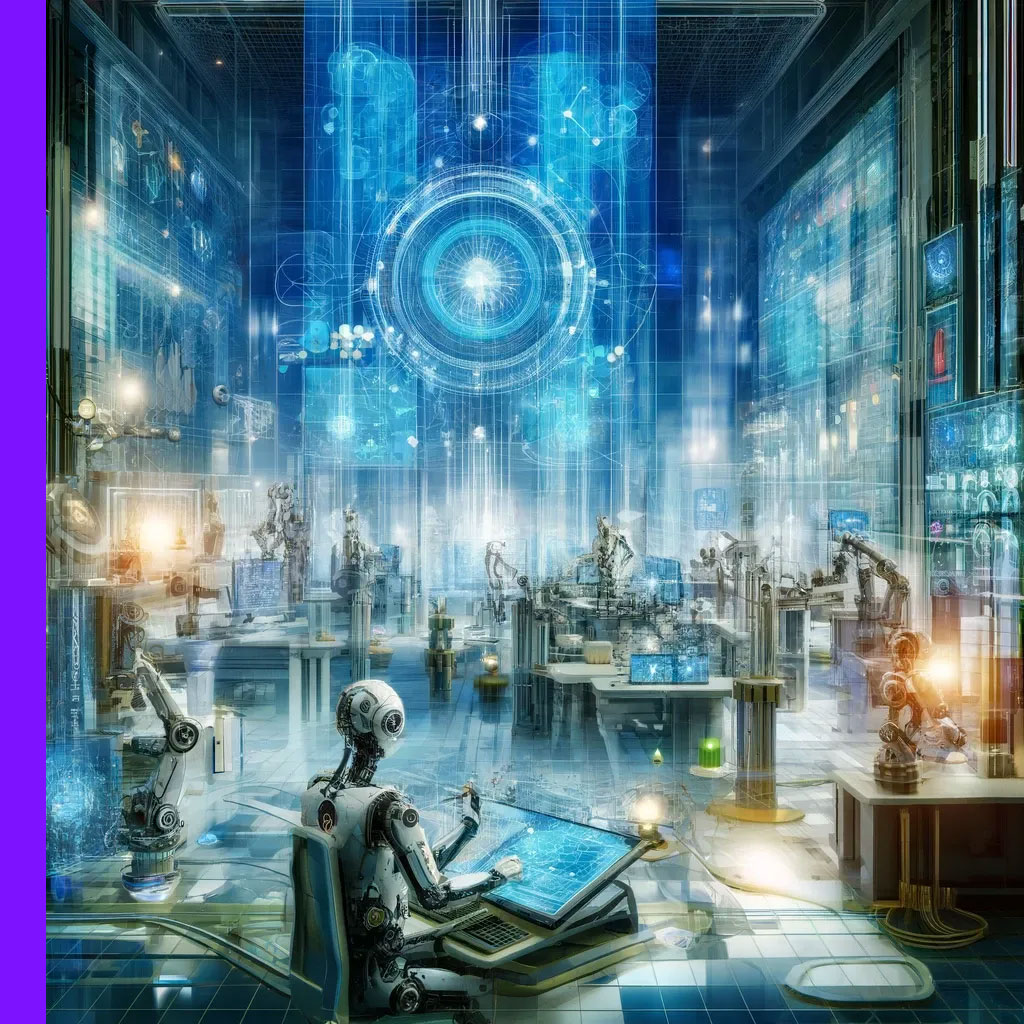
Innovation with Technology
In the age of rapid technological advancement, innovation with technology has become a cornerstone for progress across all sectors. It transcends traditional boundaries, offering new opportunities for growth, efficiency, and competitive differentiation. The following exploration delves into the myriad ways technology serves as the backbone of contemporary innovation, reshaping industries, enhancing customer experiences, and fostering sustainable practices that align with the evolving demands of our global society.
Technological Innovation Across Sectors
Examples for innovations the reshape industry landscapes
- Automation in Small Manufacturing: Small-scale manufacturers are integrating automation to revolutionize efficiency and flexibility.
- 'Marlin Steel' has utilized robotic technology to automate the production of wire baskets, resulting in increased precision, speed, and adaptability in manufacturing processes.
- 'Marlin Steel' has utilized robotic technology to automate the production of wire baskets, resulting in increased precision, speed, and adaptability in manufacturing processes.
- Agricultural Tech Startups: AgriTech startups are spearheading the transformation of agricultural practices with cutting-edge technology.
- 'FarmBot' offers open-source CNC farming machines that empower smaller farms with automated planting, watering, weeding, and harvesting, significantly enhancing resource and labor efficiency.
- 'FarmBot' offers open-source CNC farming machines that empower smaller farms with automated planting, watering, weeding, and harvesting, significantly enhancing resource and labor efficiency.
- Healthcare Mobile Apps: New mobile applications are leveraging AI to transform patient care and health monitoring.
- 'Babylon Health' provides an app that uses artificial intelligence for health consultations, enabling symptom tracking and potential diagnosis, improving access to healthcare advice.
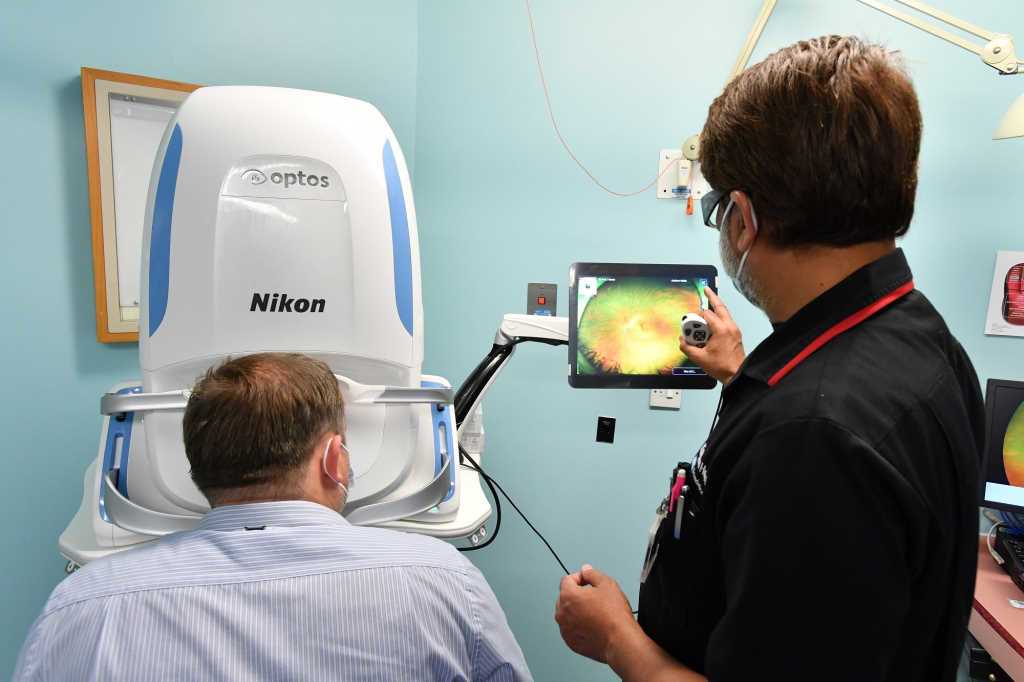 Case Study: Optos – Retinal Imaging
Case Study: Optos – Retinal Imaging- Company: Optos, Dunfermline, Scotland (Founded 1992)
- What Was Done: Optos developed a retinal imaging device capable of capturing ultra-widefield, high-resolution images of the retina. This was a significant enhancement over traditional imaging methods, which only captured a smaller portion of the retina in detail.
- Results/Impact: The technology is now widely used in optometry and ophthalmology, aiding in the early detection and treatment of a variety of eye conditions, including retinal detachments and age-related macular degeneration.
- 'Babylon Health' provides an app that uses artificial intelligence for health consultations, enabling symptom tracking and potential diagnosis, improving access to healthcare advice.
- Renewable Energy Solutions: Innovators in the energy sector are developing accessible renewable energy technologies for the mass market.
- 'Sunrun' is facilitating the adoption of solar energy through affordable, lease-based solar panel systems, eliminating the barrier of high upfront costs for homeowners.
- 'Sunrun' is facilitating the adoption of solar energy through affordable, lease-based solar panel systems, eliminating the barrier of high upfront costs for homeowners.
- Educational Software for Remote Learning: EdTech companies are creating interactive and personalized learning experiences for students, particularly in remote learning environments.
- 'Nearpod' has developed a platform that integrates interactive assessments into presentations, which has been shown to improve engagement and understanding among students in various educational settings.
Why Innovate with Technology
The reasons to innovate with technology are compelling:
- Creating Intellectual Property: Leveraging technology to innovate can lead to the development of new intellectual property (IP), such as patents, copyrights, registered designs, and trademarks. This not only secures a company's innovations but also provides a valuable asset that can contribute to long-term competitive advantage. IP can be a significant source of revenue through licensing or can enhance the company's valuation in the eyes of investors and stakeholders.
- Adding to Company Value: Technological innovation can significantly enhance a company's market valuation. By developing unique products, services, or processes, companies can increase their attractiveness to investors and customers alike. This increase in perceived value can lead to higher stock prices, better investment opportunities, and greater financial stability.
- Competitive Advantage: Technology can provide a distinct competitive edge, enabling businesses to outpace their competitors and capture a larger market share. This strategic advantage not only solidifies a company's position in the market but also attracts new customers and retains existing ones, contributing to sustainable growth and profitability .
- For example, Ocado, an online supermarket in the UK, uses robotics and AI for its warehouse operations to outperform competitors.
- Efficiency and Productivity: Automation and AI can streamline operations, leading to significant improvements in efficiency and productivity. By optimizing workflows and reducing the time and resources required for routine tasks, companies can allocate more effort towards innovation and strategic initiatives. This operational excellence translates into lower costs, higher quality products or services, and faster delivery times, enhancing the company's competitiveness and financial performance.
- Zapier, for example, allows for workflow automation between apps, saving time and reducing errors.
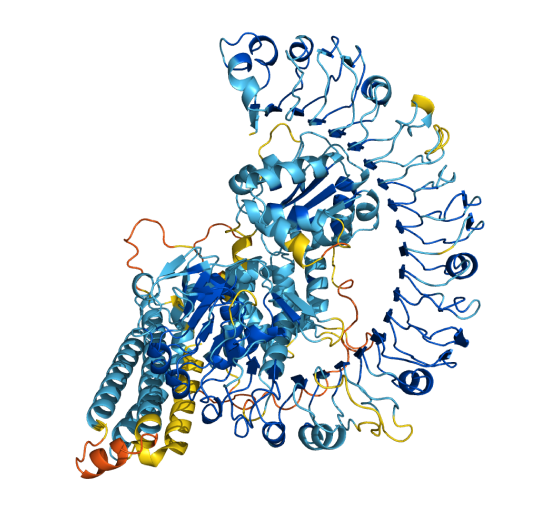 Case Study: DeepMind's AlphaFold
Case Study: DeepMind's AlphaFold- Company: DeepMind Technologies, London, UK (AlphaFold developed at 2020)
- What Was Done: : DeepMind developed AlphaFold, an AI system that predicts the 3D shapes of proteins. This technology used deep learning and was trained on the public database of protein structures. It competed in the biennial Critical Assessment of protein Structure Prediction (CASP) challenge.
- Results/Impact: AlphaFold achieved unprecedented accuracy in predicting protein structures, a critical aspect of understanding biology and developing new medicines. It was heralded as a significant breakthrough, potentially accelerating research in biology and medicine.
- Customer Experience: Innovations such as chatbots or personalized recommendations can greatly enhance customer satisfaction, fostering a positive relationship between the business and its clients. By providing tailored services and support, companies can increase customer loyalty and engagement, leading to higher retention rates and attracting new customers through positive word-of-mouth. This enhanced customer experience directly contributes to revenue growth and strengthens the brand's market presence.
- Data-Driven Decision Making: Technologies like big data analytics and AI empower businesses to make informed decisions. By analyzing vast amounts of data, companies can identify trends, optimize operations, and predict future needs, leading to better strategic decisions.
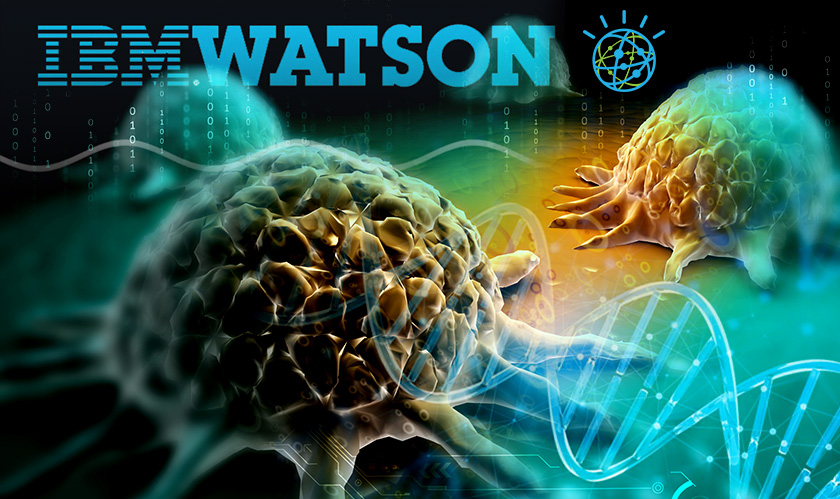 Case Study: IBM's Watson for Oncology
Case Study: IBM's Watson for Oncology- Company: IBM, Armonk, USA (Deployed 2015)
- What Was Done: IBM developed Watson for Oncology, an AI-powered system that assists physicians in identifying personalized cancer treatments for their patients. It analyzes massive datasets, including medical literature and patient records, to provide evidence-based treatment options.
- Results/Impact: Watson for Oncology has been adopted in various hospitals around the world, helping oncologists make more informed treatment decisions. It demonstrated the power of AI in solving complex health problems and has been a cornerstone in IBM's cognitive computing offerings.
- Sustainability and Environmental Responsibility: Innovations in green technology and sustainable practices allow companies to reduce their environmental impact. For instance, renewable energy solutions and efficient waste management systems can lower carbon footprints and conserve resources, aligning with global sustainability goals.
- Global Reach: The internet and digital platforms enable businesses to reach a global audience with minimal investment. Technology breaks down geographical barriers, allowing even small businesses to access international markets, collaborate with partners worldwide, and cater to a global customer base.
- Innovation in Product and Service Offerings: Technology drives the development of new and improved products and services. Through research and development in areas such as biotechnology, nanotechnology, AI, and materials science, businesses can create innovative solutions that meet evolving consumer demands.
- Security and Risk Management: With the increasing prevalence of cyber threats, technology plays a crucial role in protecting business assets and customer data. Advanced cybersecurity measures, including encryption, multi-factor authentication, and AI-powered threat detection, help mitigate risks and ensure business continuity.
How to Innovate with Technology
- Embrace Open Innovation: Engaging with external sources of innovation can bring fresh perspectives. Small tech startups often collaborate with larger firms to gain access to resources and markets.
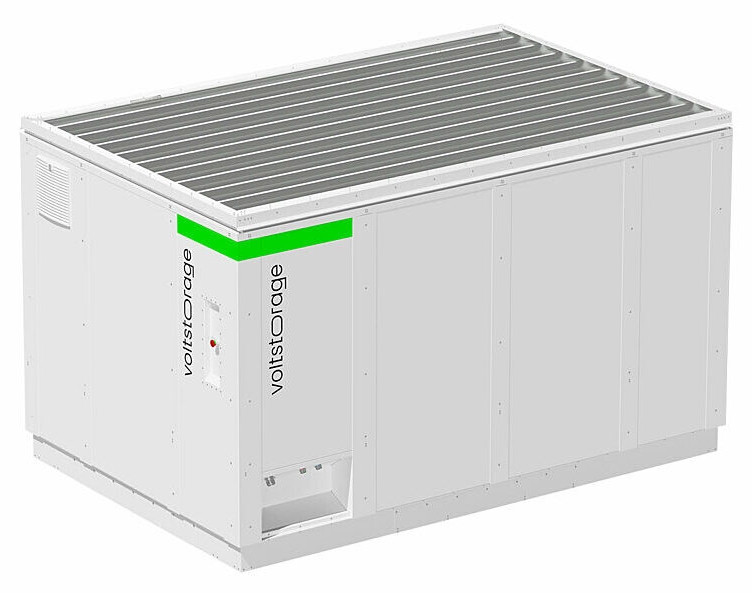 Case Study: Open Innovation at VoltStorage
Case Study: Open Innovation at VoltStorage- Company: VoltStorage, Munich, Germany (founded 2016)
- What Was Done: VoltStorage, a small-sized tech startup, set out to develop eco-friendly and cost-effective energy storage solutions. They initiated an open innovation challenge aimed at improving the longevity and efficiency of redox flow batteries. By harnessing the power of crowdsourcing, they sought expertise from chemists, material scientists, and engineers around the world. Participants were invited to contribute their knowledge to help VoltStorage develop a battery that was not only sustainable but also competitively priced and reliable over many charging cycles.
- Results/Impact: The open innovation initiative led to the development of a novel iron-salt-based redox flow battery. This innovation provided an alternative to the dominant vanadium-based systems, reducing costs and utilizing materials that are more environmentally benign. The company reported an increase in battery cycle life by 40%, a decrease in production costs by 30%, and received several industry awards for sustainability. VoltStorage's open innovation approach not only accelerated their R&D process but also positioned them as pioneers in renewable energy storage solutions.
- Invest in Research and Development (R&D): Companies like ASML, a lesser-known but leading supplier of photolithography systems for the semiconductor industry, invest heavily in R&D to drive innovation.
- Leverage Data Analytics: Data analytics can uncover patterns and opportunities for innovation. Retail analytics companies like Trax Retail use computer vision technology to provide insights to retailers and brands about store conditions and inventory.
- Foster a Culture of Continuous Learning: Encourage employees to learn about emerging technologies. For instance, the online learning platform Coursera partners with companies to upskill employees.
- Implement Agile Methodologies: Agile methodologies can speed up the innovation process by breaking it down into manageable, iterative stages.
Most Valued Tech Companies
These companies are often valued for their innovative capabilities:
- Lesser-Known Leaders: Companies like Fortinet, a leader in cybersecurity solutions, though not as well-known as giants like Apple or Amazon, are highly valued for their focused innovation in their niche.
- Emerging Giants: Shopify, which revolutionized e-commerce for small businesses, has grown to become one of the most valued tech companies due to its innovative platform.
- Sustainable Innovators: Tesla is valued not just for its electric vehicles but also for its advancements in battery technology and sustainable energy solutions.
In conclusion, the relentless pace of technological innovation demands a proactive and strategic approach from businesses and industries worldwide. As we've seen through various examples and case studies, the integration of technology not only addresses immediate operational and market challenges but also lays the foundation for future growth and sustainability. Embracing technology-driven innovation is not just about staying relevant; it's about pioneering new frontiers, creating value, and making a lasting impact on the world. The journey of innovation with technology is an ongoing process of discovery, learning, and adaptation, one that promises to continue shaping the future of our global economy and society.

Innovation in Technology
Innovating in technology, especially within the deep tech sector, embodies a forward-thinking approach to harnessing emergent technologies to tackle intricate problems and unveil unprecedented opportunities. This expansive journey is not just about creating new gadgets or software but about pushing the boundaries of what's possible, transforming industries, and addressing some of the most pressing challenges facing our world today.
It requires a blend of visionary leadership, cross-disciplinary collaboration, and a deep understanding of both technological potential and customer needs. By integrating cutting-edge research, user-centric design, and agile methodologies, innovators can navigate the complexities of deep tech to develop solutions that are not only technologically advanced but also scalable, sustainable, and impactful.
As we delve into refined approaches for fostering technological innovation, it's clear that success in this domain demands more than just technical expertise; it requires a holistic strategy that embraces open innovation, customer engagement, and data-driven insights to shape the future of technology in ways that enrich lives and expand human possibilities.
How to Innovate in Technology
Refined approaches for fostering technological innovation:
- Open Innovation: Merging internal research and development with external ideas and technologies to catalyze breakthrough innovations.
- Qualcomm’s collaboration with universities and research institutions in the development of 5G technology showcases open innovation, merging academic research with industrial application to lead the next generation of connectivity solutions.
- Qualcomm’s collaboration with universities and research institutions in the development of 5G technology showcases open innovation, merging academic research with industrial application to lead the next generation of connectivity solutions.
- Cross-disciplinary Teams: Driving innovation through the collaboration of experts from various scientific and technological disciplines.
- The development of CRISPR technology by scientists Jennifer Doudna and Emmanuelle Charpentier involved a cross-disciplinary team, combining biology, chemistry, and bioinformatics to revolutionize genetic engineering.
- The development of CRISPR technology by scientists Jennifer Doudna and Emmanuelle Charpentier involved a cross-disciplinary team, combining biology, chemistry, and bioinformatics to revolutionize genetic engineering.
- Customer Feedback Loops: Incorporating end-user feedback into the development of technically complex products to ensure they meet market needs.
- Intuitive Surgical, the maker of the da Vinci surgical system, incorporates surgeon and patient feedback to enhance the efficacy and safety of robotic-assisted surgeries.
- Intuitive Surgical, the maker of the da Vinci surgical system, incorporates surgeon and patient feedback to enhance the efficacy and safety of robotic-assisted surgeries.
- Advanced Prototyping: Using state-of-the-art technologies for rapid prototyping to shorten the innovation cycle.
- SpaceX’s employment of 3D printing for rocket parts facilitates rapid prototyping and testing, significantly speeding up the development time for new spacecraft components.
- SpaceX’s employment of 3D printing for rocket parts facilitates rapid prototyping and testing, significantly speeding up the development time for new spacecraft components.
- Data-Driven Decision Making: Utilizing big data and advanced analytics to guide innovation strategies and anticipate market trends.
- Palantir Technologies analyzes vast datasets to uncover patterns and insights, propelling innovation in data integration and analytics across security, healthcare, and financial sectors.
Roles in Technological Innovations
Essential players in the ecosystem of deep tech innovation:
- Visionary Leadership: Steering organizations through uncharted technological territories with a compelling vision.
- Demis Hassabis of DeepMind leads the company’s mission to advance AI research and apply it to address complex societal and scientific challenges.
- Demis Hassabis of DeepMind leads the company’s mission to advance AI research and apply it to address complex societal and scientific challenges.
- CTO’s and Specialized Engineers: Engineers with profound expertise in emerging technologies are crucial for transforming innovative concepts into tangible realities.
- The engineering team at Neuralink works on developing ultra-high bandwidth brain-machine interfaces, necessitating specialized knowledge in neuroscience, robotics, and software engineering.
- The engineering team at Neuralink works on developing ultra-high bandwidth brain-machine interfaces, necessitating specialized knowledge in neuroscience, robotics, and software engineering.
- User Experience Designers for Complex Systems: Ensuring advanced technologies are accessible and usable.
- Magic Leap’s UX designers focus on creating intuitive interfaces for mixed reality environments, allowing users to interact naturally with digitally augmented real-world scenarios.
- Magic Leap’s UX designers focus on creating intuitive interfaces for mixed reality environments, allowing users to interact naturally with digitally augmented real-world scenarios.
- Product Managers with Technical Expertise: Navigating the product from concept to market with an understanding of deep tech nuances.
- Boston Dynamics’ product managers guide the development and market introduction of advanced robotics, merging technical acumen with strategic market insights.
- Boston Dynamics’ product managers guide the development and market introduction of advanced robotics, merging technical acumen with strategic market insights.
- Cutting-edge Researchers: Conducting foundational research that lays the groundwork for future technological breakthroughs.
- MIT Media Lab researchers engage in projects at the confluence of technology and biology, leading to innovations like biocompatible sensors and programmable materials.
Engineering Specialties
Engineering is a vast field encompassing a variety of specialties. Here is a list of engineer types according to different industries and their common specializations:
Software Engineering
- Backend Engineer: Focuses on server-side development, databases, and application logic.
- Frontend Engineer: Specializes in the user interface and user experience aspects of software.
- Full-Stack Engineer: Works on both the frontend and backend parts of applications.
- DevOps Engineer: Bridges development and operations to improve collaboration and productivity.
- Security Engineer: Protects systems against cyber threats.
- Quality Assurance (QA) Engineer: Ensures software meets quality standards and functions properly.
- Embedded Systems Engineer: Develops software for non-computer devices or systems.
Civil Engineering
- Structural Engineer: Designs and assesses major projects like buildings or bridges to ensure their strength and durability.
- Geotechnical Engineer: Focuses on the behavior of earth materials and how they interact with construction projects.
- Transportation Engineer: Deals with the design and maintenance of transportation systems.
- Environmental Engineer: Works to improve recycling, waste disposal, public health, and water and air pollution control.
- Coastal Engineer: Manages and protects coastlines and structures in coastal areas.
Mechanical Engineering
- HVAC Engineer: Specializes in heating, ventilation, and air conditioning systems.
- Acoustical Engineer: Deals with sound and vibration in different environments.
- Automotive Engineer: Focuses on the design, development, and production of vehicles.
- Robotics Engineer: Designs and builds robots and automated systems.
Electrical Engineering
- Power Engineer: Works on the generation and supply of electricity.
- Control Engineer: Specializes in control systems and machinery automation.
- Electronics Engineer: Develops electronic components, software, products, or systems for commercial, industrial, medical, military, or scientific applications.
- Telecommunications Engineer: Focuses on the transmission and reception of signals and the design of related devices.
Aerospace Engineering
- Aeronautical Engineer: Designs aircraft such as planes and helicopters.
- Astronautical Engineer: Focuses on spacecraft and missile technology.
Chemical Engineering
- Process Engineer: Develops and optimizes industrial processes for the production of chemicals.
- Biochemical Engineer: Applies principles of chemical engineering to biological and biomedical fields.
- Materials Engineer: Develops new materials or improves existing ones for various applications.
Biomedical Engineering
- Bioinstrumentation Engineer: Creates devices for diagnosing and treating medical problems.
- Clinical Engineer: Implements medical technology to optimize healthcare delivery.
- Genetic Engineer: Works with the genetic manipulation of organisms, often within biotechnology industries.
Industrial Engineering
- Systems Engineer: Optimizes complex processes and systems for efficiency.
- Manufacturing Engineer: Designs and improves manufacturing systems.
Nuclear Engineering
- Reactor Engineer: Manages and monitors the nuclear reactors of power plants or research facilities.
- Radiation Engineer: Works on projects and equipment related to radiation, such as medical diagnostic devices or radiation therapy treatments for cancer.
Agricultural Engineering
- Farm Equipment Engineer: Designs machinery and equipment for agricultural use.
- Soil and Water Engineer: Addresses water resources management and soil conservation in agricultural settings.
Petroleum Engineering
- Drilling Engineer: Designs and manages the drilling operations for extracting oil and gas.
- Reservoir Engineer: Analyzes the flow of oil, gas, and water through reservoirs to determine the most efficient extraction method.
Each of these types of engineers plays a crucial role in their respective industries, contributing to advancements and innovations in technology and society.
Methods for Technology Innovation
Adapting innovation strategies to suit deep tech challenges:
- Agile Development in Complex Systems: Implementing agile methodologies to manage the development of intricate, technology-intensive products.
- IBM Watson’s software development teams utilize agile practices to enhance AI capabilities, enabling rapid iteration and integration of new AI functionalities.
- IBM Watson’s software development teams utilize agile practices to enhance AI capabilities, enabling rapid iteration and integration of new AI functionalities.
- Design Thinking in Tech Innovation: Solving complex technological problems with a focus on human-centric solutions.
- Philips Healthcare employs design thinking in creating medical devices and solutions, prioritizing the needs of patients and healthcare providers to drive technological advancements.
 Case Study: Water Purification by AquaSafi
Case Study: Water Purification by AquaSafi- Company: AquaSafi, Bangalore, India (Founded in 2014)
- What Was Done: AquaSafi, an Indian startup, adopted a design thinking approach to tackle the challenge of providing clean water in rural areas. Understanding the constraints of the rural population, such as limited income, lack of electricity, and the prevalence of waterborne diseases, they engaged in a human-centered design process. This involved empathizing with the end-users, defining the problem, ideating, prototyping, and testing. AquaSafi involved local communities throughout the process to ensure the solution was tailored to their needs.
- Results/Impact: : The result was a low-cost, solar-powered water purification system that required minimal maintenance. This system was capable of removing common contaminants such as bacteria, viruses, and heavy metals, ensuring the provision of safe drinking water. AquaSafi's solution impacted over 50 villages, with a reported reduction in waterborne diseases by up to 70%. Their design thinking methodology ensured that the innovation was not only technically sound but also socially accepted and financially viable for its target users.
- Philips Healthcare employs design thinking in creating medical devices and solutions, prioritizing the needs of patients and healthcare providers to drive technological advancements.
- Lean Startup in Deep Tech: Leveraging lean principles to validate hypotheses and iterate in sectors where deep technologies are applicable.
- General Fusion uses a lean startup approach in developing its fusion energy technology, employing rapid prototyping and testing to progress towards a viable fusion power source.
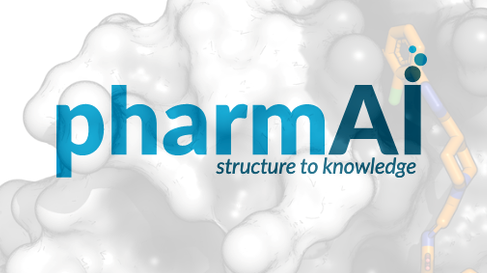 Case Study: PharmAI
Case Study: PharmAI- Company: PharmAI, Boston, USA (founded in 2019)
- What Was Done: PharmAI, a biotech startup, aimed to revolutionize the pharmaceutical industry by integrating deep learning into the early stages of drug discovery. Their goal was to develop a platform that could predict molecular behavior and interactions more accurately than traditional methods, thus speeding up the identification of potential drug candidates.
- Development Approach: : To validate their concept, PharmAI focused on creating an MVP that could demonstrate the predictive capabilities of their deep learning algorithms. The MVP aimed to show proof-of-concept for one type of biological target, allowing the team to refine their models and algorithms before scaling to a more comprehensive system.
- Prototype Testing and Irritation: The MVP was tested by partnering with a small pharmaceutical company that provided real-world data and scenarios for validation. PharmAI's platform processed this data, and its predictions were compared against historical results and concurrent laboratory experiments.
- Results/Impact: The MVP successfully identified a handful of promising compounds that matched the predictions of the deep learning algorithms, two of which proceeded to in-vitro testing and showed desired biological activity. These early successes demonstrated the platform's potential to reduce the time and cost of drug discovery by focusing research efforts on the most promising compounds. Based on these initial results, PharmAI was able to secure a series of partnerships with larger pharmaceutical companies and received significant venture capital investment to further develop the platform. Within two years, the platform expanded its predictive capabilities to multiple biological targets, significantly increasing its market value and impact.
- General Fusion uses a lean startup approach in developing its fusion energy technology, employing rapid prototyping and testing to progress towards a viable fusion power source.
- Continuous Integration/Continuous Deployment (CI/CD) for Software-Intensive Technologies: Accelerating development cycles in deep tech innovations with significant software components.
- NVIDIA adopts CI/CD practices to continually update its GPU software, supporting advancements in areas like deep learning and autonomous vehicles.
- NVIDIA adopts CI/CD practices to continually update its GPU software, supporting advancements in areas like deep learning and autonomous vehicles.
- Crowdsourcing for Complex Problem Solving: Engaging a global community to address challenging technological issues.
- The Foldit online puzzle game about protein folding demonstrates the effectiveness of crowdsourcing in generating solutions to complex scientific problems, contributing valuable insights to the field of biochemistry.
- The Foldit online puzzle game about protein folding demonstrates the effectiveness of crowdsourcing in generating solutions to complex scientific problems, contributing valuable insights to the field of biochemistry.
To conclude, it's evident that the path to technological breakthroughs is multifaceted, involving a dynamic interplay between creative ideation, strategic execution, and continuous adaptation. The methodologies and roles highlighted underscore the importance of a collaborative ecosystem where diverse talents converge to push the envelope of what's achievable. From leveraging agile development in complex systems to adopting design thinking for human-centric solutions, the strategies for innovation in deep tech are as varied as they are impactful.
Looking ahead, the potential for technological innovation to revolutionize industries, enhance human experiences, and address global challenges is boundless. Embracing this potential requires not just ingenuity and persistence but also a commitment to ethical considerations and societal impacts, ensuring that the advancements we pursue not only drive progress but also foster a more equitable and sustainable future for all.

Can Innovation Be Patented
In the dynamic landscape of technological progress, the relationship between innovation and intellectual property, particularly through patenting, plays a pivotal role in shaping the future of industries. Patents serve as a crucial mechanism to protect inventors, offering them exclusive rights to their creations and, in turn, fostering an environment conducive to innovation. However, navigating the intricacies of patenting innovation poses unique challenges, especially given the rapid pace of technological advancements and the diverse nature of innovation itself.
Types of Innovations That Can Be Patented
- Technological Inventions: Innovations providing new technical solutions or enhancing existing technologies.
- The development of Quantum Dots for high-definition displays offers unparalleled color accuracy and energy efficiency, with companies like Nanosys leading the charge in integrating these nanocrystals into consumer electronics, and, as a result, transforming the visual experience of TVs and monitors.
 Case Study: Non-Volatile Flash Memory Storage by SanDisk
Case Study: Non-Volatile Flash Memory Storage by SanDisk- Company: SanDisk Corporation, Milpitas, California (Founded 1988)
- What Was Done: SanDisk was instrumental in inventing and patenting non-volatile flash memory storage technology, which became the foundation for compact flash cards, SD cards, and USB flash drives.
- Results/Impact: : Their patented technology revolutionized data storage, leading to widespread adoption in digital cameras, smartphones, and other electronic devices. SanDisk's innovation helped them become a leading player in the flash memory market.
- The development of Quantum Dots for high-definition displays offers unparalleled color accuracy and energy efficiency, with companies like Nanosys leading the charge in integrating these nanocrystals into consumer electronics, and, as a result, transforming the visual experience of TVs and monitors.
- Software Innovations: Despite controversies (e.g. - due to the abstract nature of software), unique functionalities or processes achieved through software can be patented.
- Google’s PageRank algorithm, which significantly improved internet search results, showcases how software innovations offering novel technical solutions can qualify for patent protection. In Google's case, while the core concept of PageRank was patented in the United States in 1998, the company has continually developed and refined its search algorithms, including aspects that are kept as trade secrets. This combination of patent protection for foundational technologies and maintaining certain operational details as trade secrets is a common strategy in the tech industry to protect intellectual property and maintain a competitive edge.
- Google’s PageRank algorithm, which significantly improved internet search results, showcases how software innovations offering novel technical solutions can qualify for patent protection. In Google's case, while the core concept of PageRank was patented in the United States in 1998, the company has continually developed and refined its search algorithms, including aspects that are kept as trade secrets. This combination of patent protection for foundational technologies and maintaining certain operational details as trade secrets is a common strategy in the tech industry to protect intellectual property and maintain a competitive edge.
- Design Innovations: The aesthetic aspects of products that don't influence their functionality can be safeguarded by design patents.
- Apple’s distinct design of its iPhone, protecting its visual appeal through design patents, emphasizes the value of aesthetic innovation.
 Case Study: SunPower – Portable Solar Panel
Case Study: SunPower – Portable Solar Panel- Company: SunPower Corporation, San Jose, USA (Patented 2005)
- What Was Done: SunPower Corporation, a relatively small player in the solar industry at the time, developed a portable, high-efficiency solar panel system. They patented their innovative design that made solar panels more accessible and easier to install for residential use.
- Results/Impact: The patent allowed SunPower to establish a strong market position, expand their product line, and offer solutions that contributed to the widespread adoption of solar energy. Their innovations have made solar power more user-friendly and cost-effective for homeowners.
- Apple’s distinct design of its iPhone, protecting its visual appeal through design patents, emphasizes the value of aesthetic innovation.
- Utility Innovations: New and useful processes, machines, manufactures, or compositions of matter, or any novel improvement thereof.
- Tesla has filed numerous utility patents related to its advancements in electric vehicle (EV) technology, including its battery systems. For instance, Tesla was granted a patent titled "Battery pack thermal management system" (US Patent No. 8,933,904), filed on October 5, 2012, and issued on January 13, 2015. This patent describes a system for managing the thermal conditions of battery packs, crucial for maintaining performance and safety standards in electric vehicles. Tesla’s advancements in electric vehicle technology, including its battery systems, illustrate utility patents' role in guarding functional innovations.
- Tesla has filed numerous utility patents related to its advancements in electric vehicle (EV) technology, including its battery systems. For instance, Tesla was granted a patent titled "Battery pack thermal management system" (US Patent No. 8,933,904), filed on October 5, 2012, and issued on January 13, 2015. This patent describes a system for managing the thermal conditions of battery packs, crucial for maintaining performance and safety standards in electric vehicles. Tesla’s advancements in electric vehicle technology, including its battery systems, illustrate utility patents' role in guarding functional innovations.
- Biotechnological Innovations: Breakthroughs in biotech, including new organisms or biological processes for industrial applications.
- The patenting of genetically modified organisms (GMOs) for agricultural use, such as drought-resistant crops (patent filed at 2008 by Monsanto Technology LLC), demonstrates the patentability of biotechnological innovations.
- The patenting of genetically modified organisms (GMOs) for agricultural use, such as drought-resistant crops (patent filed at 2008 by Monsanto Technology LLC), demonstrates the patentability of biotechnological innovations.
- Pharmaceutical Innovations: New drugs, medical compounds, or methods of treatment that meet the criteria of novelty and utility.
- The patent for Viagra, developed by Pfizer, protects the research investment into sildenafil citrate for treating erectile dysfunction, marking a significant innovation in sexual health and pharmaceuticals.
- The patent for Viagra, developed by Pfizer, protects the research investment into sildenafil citrate for treating erectile dysfunction, marking a significant innovation in sexual health and pharmaceuticals.
Challenges in Patenting Innovation
- Defining Novelty and Non-Obviousness: Distinguishing an innovation as both novel and non-obvious to someone skilled in the field.
- The legal battles over the foundational patents for smartphone technologies, involving companies like Apple and Samsung, underscore the challenges of proving novelty and non-obviousness amidst rapid technological advancements and overlapping innovations.
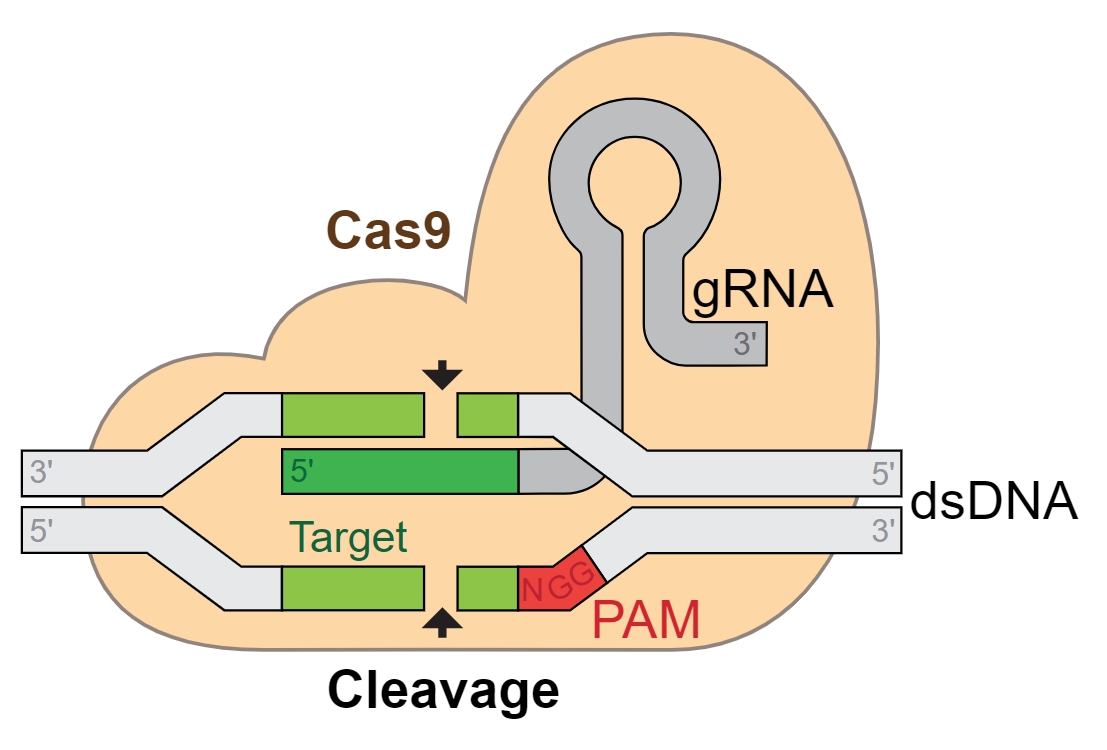 Case Study: CRISPR-Cas9 Gene Editing Technology
Case Study: CRISPR-Cas9 Gene Editing Technology- Company: Broad Institute (MIT and Harvard), Cambridge, USA (CRISPR-Cas9 patent awarded in 2014)
- What Was Done: Researchers at the Broad Institute developed CRISPR-Cas9, a groundbreaking gene-editing technology. They patented their specific application of the CRISPR-Cas9 system for editing eukaryotic genomes, which allows scientists to cut DNA at precise locations to add, remove, or alter specific genetic sequences.
- Results/Impact: The granting of the patent led to a high-profile legal battle over intellectual property rights, with significant implications for the commercial use of CRISPR technology. The patenting of CRISPR-Cas9 has led to extensive research and development in genetic engineering, with applications ranging from agriculture to medicine. It has also resulted in a high-profile patent dispute, highlighting the complex nature of patenting biotechnological innovations.
- The legal battles over the foundational patents for smartphone technologies, involving companies like Apple and Samsung, underscore the challenges of proving novelty and non-obviousness amidst rapid technological advancements and overlapping innovations.
- Global Intellectual Property Variations: The disparity in patent laws and protections across different jurisdictions complicates international patenting efforts.
- Spotify’s navigation of differing software patent laws between the U.S. and Europe highlights the complexity of securing international intellectual property protections.
- Spotify’s navigation of differing software patent laws between the U.S. and Europe highlights the complexity of securing international intellectual property protections.
- Fast-paced Technological Evolution: The rapid rate of technological change can outpace the patent application and approval process.
- The constant evolution of AI technologies poses a challenge for patent systems to keep up with the pace of innovation and adequately protect these advancements.
- The constant evolution of AI technologies poses a challenge for patent systems to keep up with the pace of innovation and adequately protect these advancements.
- Balancing Open Innovation with IP Protection: Finding the right equilibrium between protecting innovations and fostering an open environment for collaboration and further development.
- Tesla’s decision to open-source some of its patents aims to promote wider innovation in electric vehicle technologies while managing intellectual property strategically.
- Tesla’s decision to open-source some of its patents aims to promote wider innovation in electric vehicle technologies while managing intellectual property strategically.
- Complexity and Cost of Patenting Process: The financial and procedural burdens of securing patents can be prohibitive for smaller entities.
- The high costs and complexities involved in patenting software innovations, as experienced by many startups, illustrate the barriers to protecting intellectual property in competitive tech landscapes.
- The high costs and complexities involved in patenting software innovations, as experienced by many startups, illustrate the barriers to protecting intellectual property in competitive tech landscapes.
The act of patenting innovation is a nuanced endeavor that seeks to balance the protection of intellectual property with the imperative to encourage ongoing technological progress. As the digital age continues to evolve, so too will the mechanisms for safeguarding the fruits of human ingenuity, ensuring that inventors can reap the rewards of their contributions while contributing to a rich ecosystem of continual innovation.

Innovation without Patents
Innovation doesn’t always follow the traditional path of patent protection. Many breakthroughs and creative solutions emerge in environments where patents play a minimal role, relying instead on alternative strategies like keeping trade secrets on one hand, or on open-source development, collaboration, and rapid market entry on the other hand. The second approach to innovation emphasizes the sharing of knowledge and resources, fostering a community-driven model of development that can accelerate progress and access to new technologies.
Advantages of Innovating without Patents
- Trade Secret: Opting to protect innovations as trade secrets rather than through patents, keeping the details confidential to maintain a competitive edge.
- Note: In contrast to patents, trade secrets are not disclosed and can be kept confidential for an unlimited period of time.
- The Coca-Cola formula is one of the most famous examples of a trade secret, safeguarded for over a century, illustrating how companies can successfully protect valuable information without patenting it.
- Open-Source Development: Sharing software source code freely for anyone to view, modify, and distribute.
- The Linux operating system, developed and distributed under an open-source license, demonstrates how collaborative innovation can lead to robust, widely-used platforms.
 Case Study: Netscape's Open Directory Project
Case Study: Netscape's Open Directory Project- Company: Netscape, Mountain View, USA (Launched 1998)
- Background: Netscape acquired NewHoo, a grassroots directory, and rebranded it as the Open Directory Project. This initiative aimed to create an extensive web directory using a volunteer-based model, challenging existing directories (e.g. - Yahoo!), that relied heavily on paid staff
- What Was Done: The Open Directory Project engaged around 20,000 volunteers to surf the web, write site abstracts, and categorize them, significantly expanding the directory. This crowdsourced approach was adopted by several portals and sites, showcasing its effectiveness.
- Results/Impact: Within a short period, the directory compiled over 1.2 million sites across more than 190,000 categories, with around 100,000 new sites added monthly. Despite criticism regarding the potential for biased or unreliable entries, the project's model proved highly scalable and was integrated by major portals like Lycos and AltaVista, demonstrating the viability of volunteer-driven content curation in digital indexing.
- Disclosure: At ZOOZ Consulting, we crafted an innovative demo for our client Adwise, an AdTech startup, by harnessing the Open Directory Project's extensive categorization of the internet. Presented at the ISPCON conference in 1999, San Jose, California, our demo showcased an advertising engine capable of displaying highly targeted popup ads during web browsing, a concept ahead of its time. This achievement, leveraging the comprehensive indexing of the Open Directory Project, set a precedent in targeted advertising and earned Adwise the conference's innovation award. More details on this can be found here.
- The Linux operating system, developed and distributed under an open-source license, demonstrates how collaborative innovation can lead to robust, widely-used platforms.
- Rapid Market Entry: Speeding innovation to market without the delays associated with patent filings.
- Companies like Xiaomi leverage rapid market entry to quickly launch products, relying on market speed and ecosystem integration rather than patents for competitive advantage.
- Companies like Xiaomi leverage rapid market entry to quickly launch products, relying on market speed and ecosystem integration rather than patents for competitive advantage.
- Business Model Innovation: Creating unique ways of delivering value that don’t rely on patented technology.
- Netflix’s transition from DVD rentals to streaming services illustrates how innovating the business model can transform an industry without relying on patented technology.
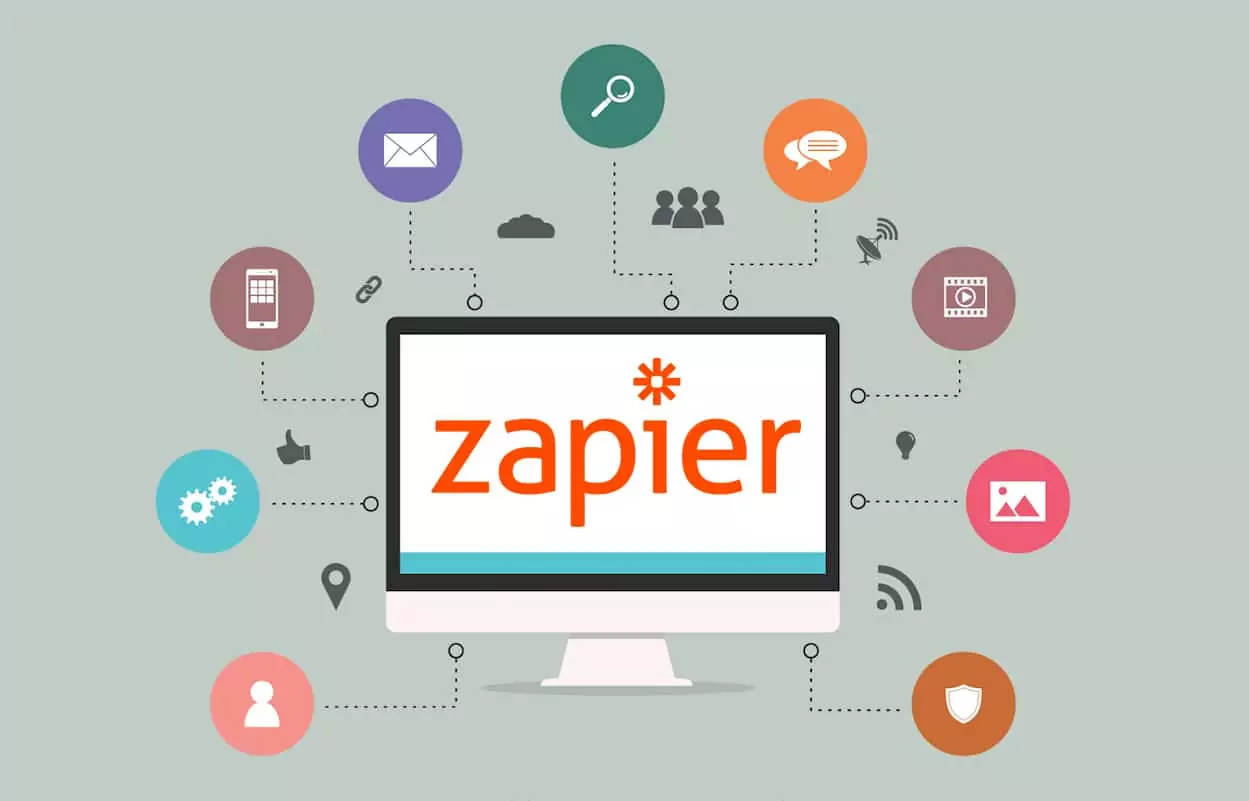 Case Study: Zapier's Pay-Per-Use SaaS Model
Case Study: Zapier's Pay-Per-Use SaaS Model- Company: Zapier, San Francisco, USA (Founded 2011)
- What Was Done: Zapier introduced a unique business model in the SaaS (Software As A Service) industry by offering automation services on a pay-per-use basis, alongside traditional subscription models. This approach allowed users to pay only for the specific tasks or "zaps" they executed, catering to businesses with variable automation needs.
- Results/Impact: This model attracted a diverse range of customers, from small businesses to large enterprises, significantly increasing Zapier's user base. It provided the flexibility needed by smaller companies with less frequent automation needs, while still accommodating larger clients with high-volume requirements. Zapier's innovative pricing strategy contributed to its rapid growth and established it as a key player in the automation and productivity software market.
- Netflix’s transition from DVD rentals to streaming services illustrates how innovating the business model can transform an industry without relying on patented technology.
- Community and Collaboration: Building ecosystems where collaboration and shared goals drive innovation forward.
- The development of the HTTP protocol and the World Wide Web by Tim Berners-Lee, who chose not to patent his invention, enabling free use and widespread adoption, highlights the potential of community-driven innovation.
 Case Study: Tesla's Open Patent Pledge
Case Study: Tesla's Open Patent Pledge- Company: Tesla, Inc., Palo Alto, USA (Pledge Made in 2014)
- What Was Done: Tesla announced that it would not initiate patent lawsuits against anyone who, in good faith, used their patented electric vehicle technology.
- Results/Impact: This move was aimed at accelerating the advent of sustainable transport by encouraging the development of electric vehicles. It also positioned Tesla as a leader in the electric vehicle space, potentially benefiting from the overall growth of the industry.
- The development of the HTTP protocol and the World Wide Web by Tim Berners-Lee, who chose not to patent his invention, enabling free use and widespread adoption, highlights the potential of community-driven innovation.
Challenges of Innovating without Patents
- Protecting Intellectual Property: Ensuring creators can still benefit from their innovations without traditional IP protections.
- Open-source projects often rely on alternative licensing agreements, like Creative Commons, to protect the creator's rights while promoting sharing and reuse.
- Open-source projects often rely on alternative licensing agreements, like Creative Commons, to protect the creator's rights while promoting sharing and reuse.
- Sustaining Innovation: Finding models to sustain innovation efforts financially without the exclusive monetization options patents offer.
- Mozilla Firefox, a free and open-source web browser, utilizes donations, sponsorships, and partnerships to sustain its development.
- Mozilla Firefox, a free and open-source web browser, utilizes donations, sponsorships, and partnerships to sustain its development.
- Competitive Advantage: Maintaining a competitive edge in a market where proprietary technologies are not protected by patents.
- Red Hat thrives by offering open-source solutions (for example – an enterprise Linux software) and exceptional support, proving that a focus on community-driven innovation can build a sustainable business and ensure market leadership without patent reliance.
- Red Hat thrives by offering open-source solutions (for example – an enterprise Linux software) and exceptional support, proving that a focus on community-driven innovation can build a sustainable business and ensure market leadership without patent reliance.
- Quality and Standardization: Ensuring the quality and interoperability of innovations developed in an open or collaborative environment.
- The Android operating system, while open-source, is managed by Google to ensure a consistent and high-quality user experience across diverse devices.
- The Android operating system, while open-source, is managed by Google to ensure a consistent and high-quality user experience across diverse devices.
- Replication and Fast Followers: Mitigating the risk of innovation being quickly copied and replicated by competitors.
- Kickstarter, a crowdfunding platform, has seen numerous projects replicated and launched in other markets, challenging original creators to innovate continually and maintain their first-mover advantage.
- Kickstarter, a crowdfunding platform, has seen numerous projects replicated and launched in other markets, challenging original creators to innovate continually and maintain their first-mover advantage.
Innovation without patents opens a realm of possibilities where creativity, collaboration, and rapid dissemination of ideas can thrive outside the traditional intellectual property framework. This approach not only democratizes innovation but also challenges conventional wisdom about the necessity of patents in driving technological and social progress. As we continue to navigate the complexities of the digital era, the principles underlying innovation without patents will likely become increasingly relevant, offering alternative pathways to discovery and impact.
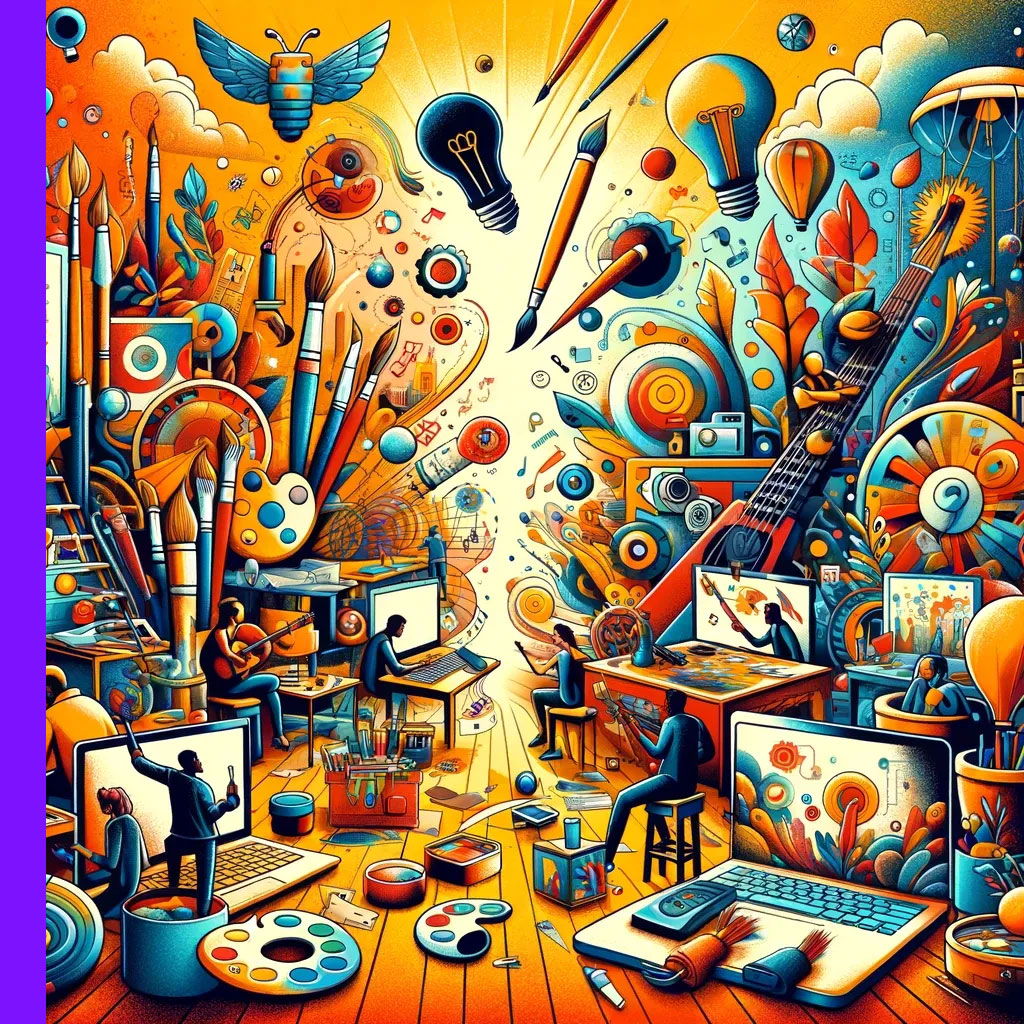
Innovation Where Creativity and Technology Meet
At the intersection of creativity and technology, innovation flourishes, transforming ideas into tangible solutions that can change the world. This convergence fosters an environment where artistic vision and technical expertise blend, leading to groundbreaking advancements that push the boundaries of what is possible. Here, the imaginative processes of the arts and the problem-solving focus of science and engineering combine to create innovations that are not only technologically sophisticated but also deeply impactful on a human level.
Key Aspects of Innovation at the Intersection
- Interdisciplinary Collaboration: Bringing together diverse fields to spark unique solutions.
- The MIT Media Lab is renowned for its interdisciplinary approach, merging art, science, and technology to pioneer innovations like wearable computing and digital learning technologies.
- The MIT Media Lab is renowned for its interdisciplinary approach, merging art, science, and technology to pioneer innovations like wearable computing and digital learning technologies.
- Design Thinking: Integrating human-centric design principles into technology development.
- IDEO, a global design company, employs design thinking to create user-friendly and innovative products, services, and systems, such as the first computer mouse for Apple and the user interface for ATMs.
 Case Study: ROLI's Touch-Responsive Musical Instruments
Case Study: ROLI's Touch-Responsive Musical Instruments- Company: ROLI Ltd., London, UK (Founded 2009)
- What Was Done: ROLI created a new category of musical instruments called Seaboard, which reimagines the piano keyboard as a smooth, touch-responsive surface. This innovation allows musicians to modulate sound through touch, leveraging technology to enhance creative expression.
- Results/Impact: The Seaboard has gained acclaim from musicians and technologists for its innovative design and has expanded the ways artists can interact with digital music. ROLI's success with the Seaboard has led to partnerships with established music technology companies and growth in educational and consumer markets.
- Digital Art and Visualization: Using technology to create and visualize complex concepts and data.
- Autodesk’s software has been instrumental in movie visual effects, architecture, and engineering, demonstrating how technology can be used to realize creative visions and intricate designs.
- Autodesk’s software has been instrumental in movie visual effects, architecture, and engineering, demonstrating how technology can be used to realize creative visions and intricate designs.
- Creative Coding and Software Development: Developing software that enables new forms of expression and interaction.
- The Processing programming language, designed for the visual arts community, facilitates the teaching of coding in a visual context, enabling artists and designers to create interactive digital artworks.
- The Processing programming language, designed for the visual arts community, facilitates the teaching of coding in a visual context, enabling artists and designers to create interactive digital artworks.
- Innovative Storytelling and Content Creation: Leveraging technology to tell stories in new and engaging ways.
- Pixar Animation Studios combines cutting-edge animation technology with storytelling, creating films that enchant audiences while pushing the envelope of digital animation.
Challenges and Opportunities in Creative-Technological Innovation
- Bridging Knowledge Gaps: Fostering mutual understanding and collaboration between artists and technologists.
- The collaboration between artist Refik Anadol and Google’s AI team on data-driven art installations showcases how bridging knowledge gaps can result in visually stunning and technically complex artworks.
- The collaboration between artist Refik Anadol and Google’s AI team on data-driven art installations showcases how bridging knowledge gaps can result in visually stunning and technically complex artworks.
- Access to Technology: Ensuring artists and creators have the tools and knowledge to utilize advanced technologies.
- The Lantern project offers an innovative approach to internet access by using a small, low-cost device that receives data through light signals from satellites, enabling users in remote areas without traditional internet infrastructure to access digital content, epitomizing a significant leap in bridging the global digital divide.
 Case Study: Adobe's Creative Cloud Evolution
Case Study: Adobe's Creative Cloud Evolution- Company: Adobe Inc., San Jose, USA (Launched 2011)
- What Was Done: Adobe transitioned from selling boxed software to a subscription-based cloud service, known as Adobe Creative Cloud. This service combines creativity and technology by offering a suite of multimedia creation tools online, along with a platform for sharing and collaboration.
- Results/Impact: The Creative Cloud has become a staple for creatives worldwide, offering constant updates, cloud storage, and new features that enhance user productivity. Adobe's shift to the cloud significantly increased its recurring revenue and expanded its user base, including creatives who might not have been able to afford the high upfront costs of Adobe's traditional software.
- Intellectual Property and Copyright: Navigating the complexities of copyright in the digital age.
- Creative Commons licenses offer a flexible range of protections and freedoms for authors and artists, facilitating the legal sharing and use of creative works.
- Creative Commons licenses offer a flexible range of protections and freedoms for authors and artists, facilitating the legal sharing and use of creative works.
- Sustainability and Ethics: Considering the environmental impact and ethical implications of technology in creative projects.
- Studio Roosegaarde’s “Smog Free Project” combines artistic vision with technological innovation to tackle air pollution, creating tangible solutions that also serve as compelling works of art.
- Studio Roosegaarde’s “Smog Free Project” combines artistic vision with technological innovation to tackle air pollution, creating tangible solutions that also serve as compelling works of art.
- Funding and Support: Securing the resources needed to pursue ambitious creative-technological projects.
- Kickstarter and other crowdfunding platforms have become vital sources of funding for creative projects that blend art and technology, enabling innovators to bring their visions to life with the support of a global community.
- Kickstarter and other crowdfunding platforms have become vital sources of funding for creative projects that blend art and technology, enabling innovators to bring their visions to life with the support of a global community.
The fusion of creativity and technology represents a potent catalyst for innovation, offering new ways to address complex challenges, engage with audiences, and express ideas. By embracing the collaborative spirit and pushing the limits of both art and engineering, we can continue to unlock unprecedented possibilities for innovation and transformation.
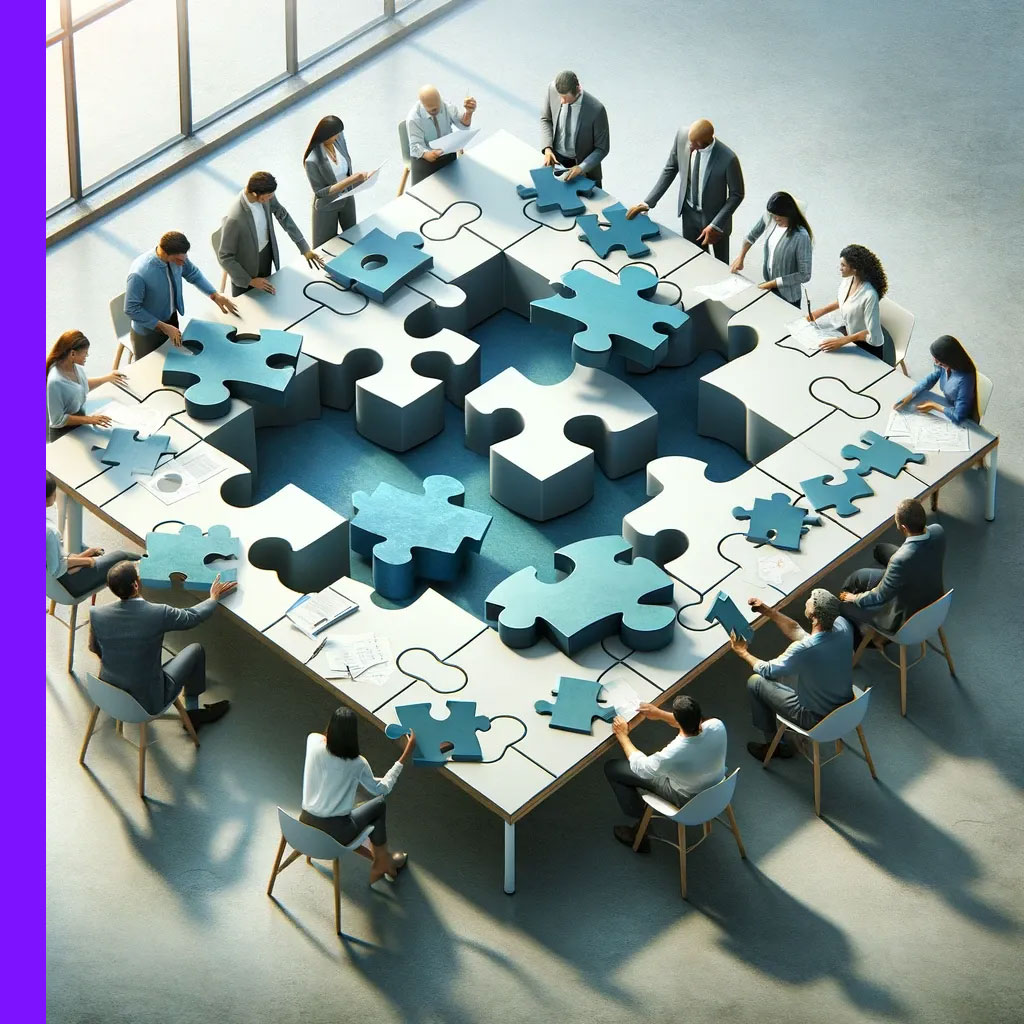
Problem Solving
Effective problem solving is at the core of innovation, turning challenges into opportunities for advancement and growth. It involves a systematic approach to identifying issues, understanding their root causes, and devising creative solutions that not only address immediate concerns but also pave the way for future improvements. This process is crucial across all domains of innovation, from technology and engineering to business and social entrepreneurship, enabling innovators to navigate complexities and deliver impactful outcomes.
Strategies for Effective Problem Solving in Innovation
- Root Cause Analysis: Digging deep to find the underlying causes of problems.
- The "5 Whys" technique, a simple yet powerful tool for root cause analysis, has been effectively used by organizations like Toyota to identify the source of manufacturing issues, leading to more durable solutions.
- The "5 Whys" technique, a simple yet powerful tool for root cause analysis, has been effectively used by organizations like Toyota to identify the source of manufacturing issues, leading to more durable solutions.
- Design Thinking: Applying a human-centered approach to problem solving.
- The Stanford d.school has popularized design thinking as a way to tackle complex problems across various sectors, emphasizing empathy, ideation, and prototyping to develop innovative solutions.
 Case Study: SimpliSafe's Home Security
Case Study: SimpliSafe's Home Security- Company: SimpliSafe, Boston, USA (Founded 2006)
- What Was Done: SimpliSafe innovated in the home security industry by offering affordable, easy-to-install, and reliable security systems that homeowners can install themselves. This was a shift from the traditional models that required professional installation and long-term contracts.
- Results/Impact: SimpliSafe's business model addressed the problem of expensive and complex home security systems. It made home security accessible to a wider audience and disrupted the market. The company has grown significantly, reflecting the demand for user-friendly and cost-effective home security solutions.
- Computational Thinking: Breaking down problems into manageable parts that can be solved through computer science principles.
- Google’s computational thinking resources assist educators and students in applying problem-solving techniques that underpin computer science, fostering a generation of problem solvers.
- Google’s computational thinking resources assist educators and students in applying problem-solving techniques that underpin computer science, fostering a generation of problem solvers.
- Creative Brainstorming: Generating a wide range of ideas to find unexpected solutions.
- IDEO’s brainstorming sessions encourage wild ideas and build on the thoughts of others, creating an environment where innovative solutions can emerge from collective creativity.
- IDEO’s brainstorming sessions encourage wild ideas and build on the thoughts of others, creating an environment where innovative solutions can emerge from collective creativity.
- Systems Thinking: Viewing problems as part of a larger system to understand the broader impacts of solutions.
- The Waters Foundation promotes systems thinking in education, helping students and educators see the bigger picture and how individual elements interact within a system, leading to more sustainable solutions.
 Case Study: Affordable Computing by Raspberry Pi Foundation
Case Study: Affordable Computing by Raspberry Pi Foundation- Company: Raspberry Pi Foundation, Cambridge, United Kingdom (Founded in 2009)
- Problem They Faced: The Raspberry Pi Foundation identified a significant barrier to computer science education and digital skill development among students and hobbyists worldwide: the high cost of computing hardware.
- What Was Done: To overcome this challenge, the foundation developed the Raspberry Pi, a low-cost, credit-card-sized computer that plugs into a computer monitor or TV and uses a standard keyboard and mouse. This compact device was designed to be affordable, with the goal of enabling more people to access computing and learn programming through practical projects in a fun and engaging way.
- Results/Impact: The Raspberry Pi has become one of the most popular and influential computing devices globally, with millions of units sold. It has been widely adopted in educational institutions to teach programming skills, build computer labs at a fraction of the usual cost, and empower hobbyists and makers to develop a wide range of projects from home automation systems to weather stations. The Raspberry Pi Foundation's initiative has significantly contributed to reducing the digital divide and fostering a new generation of computer scientists and enthusiasts.
Challenges in Problem Solving for Innovation
- Overcoming Cognitive Biases: Ensuring decision-making and problem-solving processes are not overly influenced by biases.
- Tools like the "Ladder of Inference" help individuals and teams check their assumptions and consider different perspectives, mitigating the impact of biases on problem solving.
- Tools like the "Ladder of Inference" help individuals and teams check their assumptions and consider different perspectives, mitigating the impact of biases on problem solving.
- Balancing Creativity and Feasibility: Finding solutions that are both innovative and practical to implement.
- The "How Might We" question framework guides teams to reframe problems in a way that opens up creative possibilities while remaining grounded in what is achievable.
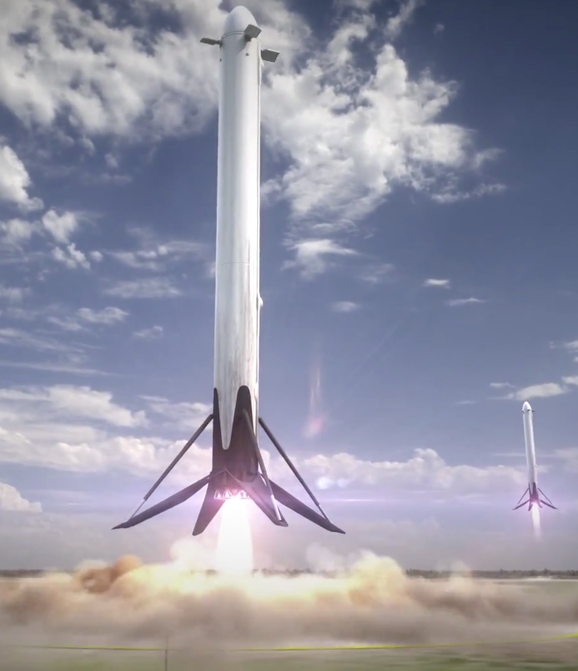 Case Study: SpaceX - Reusable Rocket
Case Study: SpaceX - Reusable Rocket- Company: Space Exploration Technologies Corp. (SpaceX), Hawthorne, California (Founded in 2002)
- Problem They Faced: : SpaceX confronted the enormous costs associated with space exploration, primarily due to the traditional model of expendable launch systems. Each mission requiring a new rocket significantly increased the cost of access to space, making frequent launches and ambitious space exploration projects financially unfeasible.
- How They Solved It: SpaceX committed to the development of reusable rocket technology, a concept that many in the aerospace industry deemed impractical or impossible. Through a combination of innovative design, rigorous testing, and relentless iteration, SpaceX successfully developed the Falcon 9, the first orbital-class rocket capable of re-flight. Key to this achievement was the development of controlled landing technology, allowing rockets to land vertically either on land or on drone ships at sea.
- Results/Impact: The successful implementation of reusable rockets has dramatically reduced the cost of space travel, making it more accessible and frequent. SpaceX's breakthrough has not only established it as a leader in the aerospace industry but also opened up new possibilities for space exploration, satellite deployment, and even interplanetary travel. This achievement has paved the way for future missions to Mars and beyond, marking a significant milestone in human space exploration.
- Interdisciplinary Collaboration: Working across different areas of expertise to tackle complex problems.
- Projects like the Large Hadron Collider (LHC) at CERN demonstrate how physicists, engineers, and computer scientists collaborate on problem-solving, pushing the boundaries of human knowledge about the universe.
- Scaling Solutions: Adapting local solutions to work at a larger scale.
- Social enterprises like Grameen Bank have faced challenges in scaling their microfinance model, requiring innovative approaches to adapt solutions to diverse contexts and cultures.

Case Study: Tesla's Battery Revolution
- Company: Tesla, Inc., Palo Alto, California (Founded in 2003)
- Problem They Faced: Tesla faced significant challenges in the electric vehicle (EV) market related to the cost, capacity, and lifespan of lithium-ion batteries. The high cost and limited range of EV batteries were major barriers to consumer adoption and the scalability of electric vehicles.
- How They Solved It: Tesla embarked on an ambitious plan to revolutionize battery technology by investing heavily in research and development, leading to innovations in battery design, chemistry, and manufacturing processes. A key breakthrough was the development of the "Gigafactory," a massive battery manufacturing plant designed to significantly increase battery production while reducing costs through economies of scale and innovative manufacturing techniques.
- Results/Impact: The Gigafactory enabled Tesla to reduce the cost of their lithium-ion batteries by more than 35%, significantly lowering the price of electric vehicles and making them more accessible to the general public. This breakthrough not only bolstered Tesla's position in the automotive industry but also accelerated the global transition to sustainable transportation. Furthermore, Tesla's advancements in battery technology have had wide-ranging impacts, including improvements in energy storage solutions for renewable energy systems.
- Evaluating Impact: Measuring the effectiveness and impact of solutions over time.
- Nonprofits and social innovators often use impact assessment tools like The Logic Model to evaluate the success of their initiatives in solving social problems, ensuring that solutions lead to meaningful change.
 Case Study: Mushroom Packaging by Ecovative Design
Case Study: Mushroom Packaging by Ecovative Design- Company: Ecovative Design, Green Island, New York (Founded in 2007)
- Problem They Faced: Ecovative Design aimed to address the environmental problems caused by synthetic packaging materials, such as polystyrene foam (Styrofoam), which are not biodegradable and significantly contribute to pollution and waste in landfills.
- How They Solved It: The company developed a novel approach to packaging using mycelium, the root structure of mushrooms. By growing mycelium around agricultural waste, Ecovative Design was able to create a fully compostable and biodegradable material that could be molded into various shapes and sizes, effectively replacing synthetic packaging.
- Results/Impact: Ecovative Design's mushroom-based packaging solution has been adopted by several companies across industries, significantly reducing reliance on harmful plastics and foams. This innovation not only offers a sustainable alternative to traditional packaging but also promotes waste reduction and has the potential to transform the packaging industry. The company's success has spurred further innovations in mycelium-based products, including building materials and leather alternatives, demonstrating the vast potential of bio-fabrication.
- Nonprofits and social innovators often use impact assessment tools like The Logic Model to evaluate the success of their initiatives in solving social problems, ensuring that solutions lead to meaningful change.
Problem solving in innovation requires a blend of analytical thinking, creative ideation, and strategic execution. By employing a variety of approaches and being mindful of potential challenges, innovators can develop solutions that not only address immediate issues but also contribute to long-term progress and success.

Think Tank
Think Tanks: Catalysts for Innovation
Think tanks serve as intellectual incubators, playing a pivotal role in shaping policies, technologies, and strategies across various domains. By fostering an environment that encourages rigorous research, critical analysis, and creative thinking, these organizations contribute significantly to solving complex societal challenges and driving innovation forward. Think tanks bring together experts from diverse fields to collaborate on research projects, policy analysis, and strategy development, offering evidence-based solutions and insights that inform decision-making and public discourse.
Key Functions of Think Tanks in Promoting Innovation
- Research and Analysis: Conducting in-depth studies on pressing issues.
- Specializing in urban development and sustainability, the Policy Innovation Lab develops solutions for cities' complex challenges. Through collaborative projects, it leverages urban data analytics and policy design to enhance city living, demonstrating the impact of focused research in transforming urban environments for the better.
- Specializing in urban development and sustainability, the Policy Innovation Lab develops solutions for cities' complex challenges. Through collaborative projects, it leverages urban data analytics and policy design to enhance city living, demonstrating the impact of focused research in transforming urban environments for the better.
- Policy Development and Advocacy: Shaping public policy through research and engagement.
- The Brookings Institution plays a crucial role in influencing U.S. policy on a range of issues, from economic and social policy to foreign policy, through its research and advocacy, demonstrating the impact of think tanks on policy innovation.
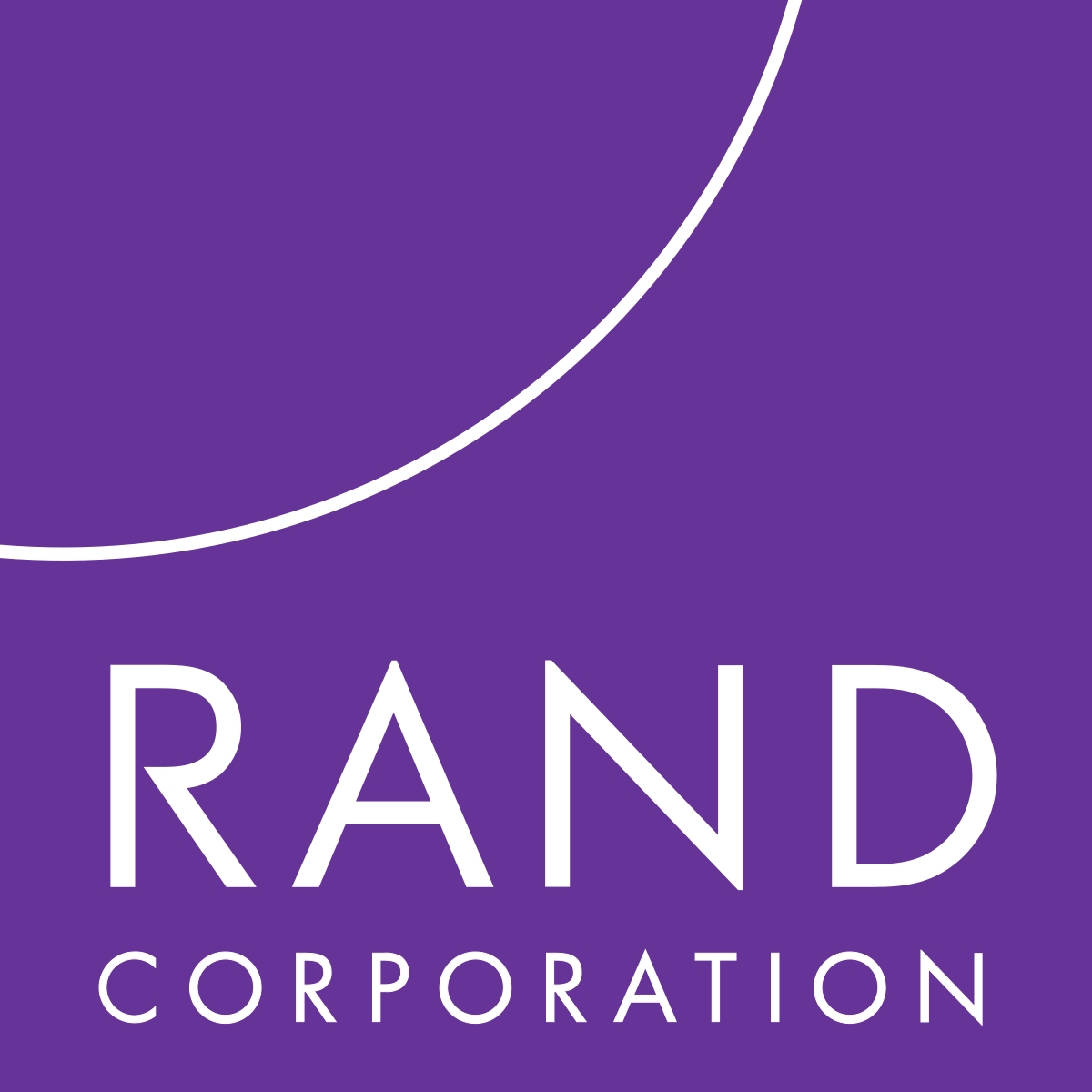 Case Study: The RAND Corporation and Policy Research
Case Study: The RAND Corporation and Policy Research- Company: RAND Corporation, Santa Monica, USA (Founded 1948)
- What Was Done: RAND Corporation, one of the most famous think tanks, has been at the forefront of policy research and analysis. It works on a wide range of issues, from education and health to national security. RAND conducts research to inform public policy decisions and provide solutions to public and private sector clients.
- Results/Impact: RAND's research has had a significant impact on policy decisions in the United States and globally. For instance, the development of the RAND Health Insurance Experiment has shaped health policy by providing evidence on health costs and outcomes.
- Convening Stakeholders: Bringing together policymakers, industry leaders, academics, and the public to facilitate dialogue and collaboration.
- The World Economic Forum, though not a think tank in the traditional sense, organizes the annual Davos meeting, which acts as a global platform for stakeholder dialogue on critical world issues, driving collaborative innovation.
- The World Economic Forum, though not a think tank in the traditional sense, organizes the annual Davos meeting, which acts as a global platform for stakeholder dialogue on critical world issues, driving collaborative innovation.
- Disseminating Knowledge: Publishing research findings and analysis to inform the public and decision-makers.
- The Pew Research Center offers insights into American social issues, politics, and technology trends through its surveys and reports, highlighting the role of think tanks in disseminating knowledge that can lead to societal innovation.
 Case Study: E3G Third Generation Environmentalism
Case Study: E3G Third Generation Environmentalism- Company: E3G, London, UK (Founded 2004)
- What Was Done: E3G is an independent climate change think tank working to accelerate the global transition to a low-carbon economy. E3G specializes in climate diplomacy, energy policy, and climate risk, providing research and analysis to influence policy and public debate.
- Results/Impact: Despite its small size, E3G has been influential in shaping climate policy, particularly in Europe. It has been involved in key policy developments, such as the EU's 2030 climate and energy framework and the Green Finance Strategy.
- Strategic Foresight: Anticipating future trends and preparing for emerging challenges.
- The Future of Humanity Institute at Oxford University focuses on the long-term impact of artificial intelligence and biotechnology, showcasing how think tanks contribute to innovation by exploring future scenarios and developing strategies to navigate potential risks and opportunities.
 Case Study: McKinsey Global Institute's Research on Future Workplaces
Case Study: McKinsey Global Institute's Research on Future Workplaces- Company: McKinsey Global Institute, New York, USA (Report published in 2017)
- What Was Done: : McKinsey's think tank, the McKinsey Global Institute, conducted extensive research on the future of work in the face of automation. They analyzed data from a range of professions and projected the impact of emerging technologies on job displacement and creation.
- Results/Impact: The report provided valuable insights for businesses and governments on preparing for the transitions in the labor market. It highlighted the need for skills adaptation and the importance of policy responses to ensure that the benefits of automation enhance productivity without detrimental effects on employment.
Challenges Faced by Think Tanks in Fostering Innovation
- Ensuring Independence and Objectivity: Navigating funding sources and political pressures to maintain unbiased research.
- Think tanks must carefully balance their funding sources and engage in transparent operations to preserve their credibility and ensure that their contributions to innovation are not influenced by external agendas.
- Think tanks must carefully balance their funding sources and engage in transparent operations to preserve their credibility and ensure that their contributions to innovation are not influenced by external agendas.
- Bridging the Gap Between Research and Implementation: Translating research findings into actionable policies and practices.
- The challenge lies in effectively communicating complex research outcomes to policymakers and practitioners, ensuring that innovative ideas are implemented and have a tangible impact.
 Case Study: Energy Policy Simulator by Energy Innovation
Case Study: Energy Policy Simulator by Energy Innovation- Company: Energy Innovation LLC, San Francisco, USA (Ongoing since 2012)
- What Was Done: Energy Innovation is a clean energy and environmental policy firm that provides customized research and analysis to policymakers, thought leaders, and advocates. They are known for the Energy Policy Simulator, which helps to design more effective energy policies.
- Results/Impact: The think tank's tools and research have informed climate policy discussions around the world, providing evidence-based solutions to reduce greenhouse gas emissions effectively. Their work has influenced energy policy at both state and national levels.
- Adapting to Rapid Technological Change: Keeping pace with the speed of technological advancement and its societal implications.
- Think tanks are tasked with continuously updating their research methodologies and areas of focus to remain relevant and contribute effectively to discussions on emerging technologies and innovation.
- Think tanks are tasked with continuously updating their research methodologies and areas of focus to remain relevant and contribute effectively to discussions on emerging technologies and innovation.
- Engaging Diverse Perspectives: Incorporating a wide range of viewpoints to enrich research and analysis.
- Fostering an inclusive environment where diverse voices, including those from underrepresented groups, are heard and valued is crucial for producing comprehensive and innovative solutions.
- Fostering an inclusive environment where diverse voices, including those from underrepresented groups, are heard and valued is crucial for producing comprehensive and innovative solutions.
- Measuring Impact: Evaluating the effectiveness of their contributions to policy and innovation.
- Developing metrics and methodologies to assess the real-world impact of their work remains a challenge for think tanks, requiring ongoing efforts to demonstrate their value in driving societal progress.
- Developing metrics and methodologies to assess the real-world impact of their work remains a challenge for think tanks, requiring ongoing efforts to demonstrate their value in driving societal progress.
Think tanks play an essential role in the ecosystem of innovation, bridging the gap between research, policy, and practice. Through their multifaceted functions, they not only contribute to the development of innovative solutions to global challenges but also enhance our understanding of the complex interplay between technology, society, and policy. As the world faces increasingly complex problems, the work of think tanks will continue to be invaluable in navigating the path toward sustainable and inclusive innovation.
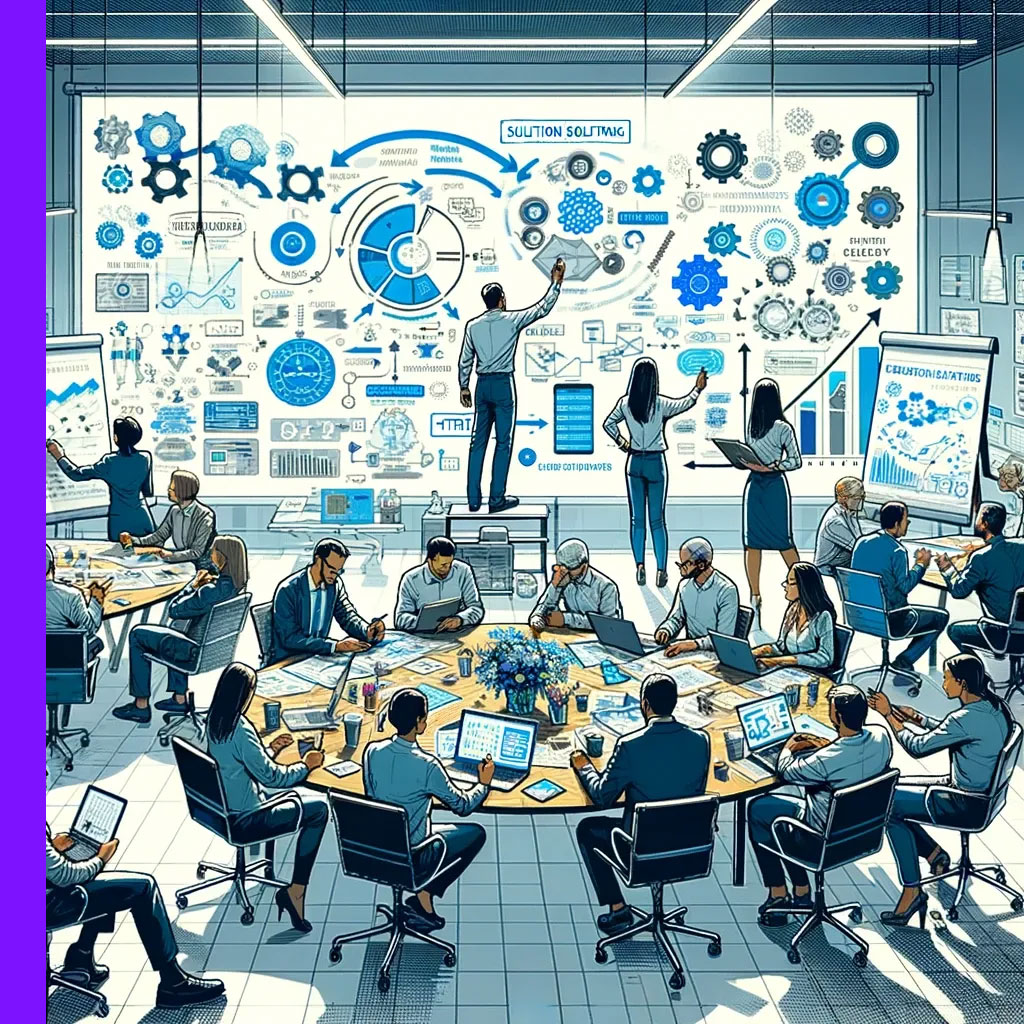
TRIZ
TRIZ, an acronym for the Russian phrase "Teoriya Resheniya Izobretatelskikh Zadach" which translates to "Theory of Inventive Problem Solving," is a systematic approach to creativity and innovation. Developed by Soviet engineer and researcher Genrich Altshuller and his colleagues, TRIZ is based on the premise that the evolution of systems is governed by certain patterns and principles that can be identified and applied to develop innovative solutions systematically. By analyzing thousands of patents to understand how inventions are made, Altshuller identified patterns in the way problems are solved and innovations are developed, leading to the formulation of TRIZ methodologies and tools.
Core Components of TRIZ in Enhancing Innovation
- The 40 Inventive Principles: Guidelines to solve technical contradictions and foster innovation.
- The principle of "Segmentation" (breaking an object into independent parts) is applied in modular smartphones, allowing users to customize and upgrade individual components without replacing the entire device.
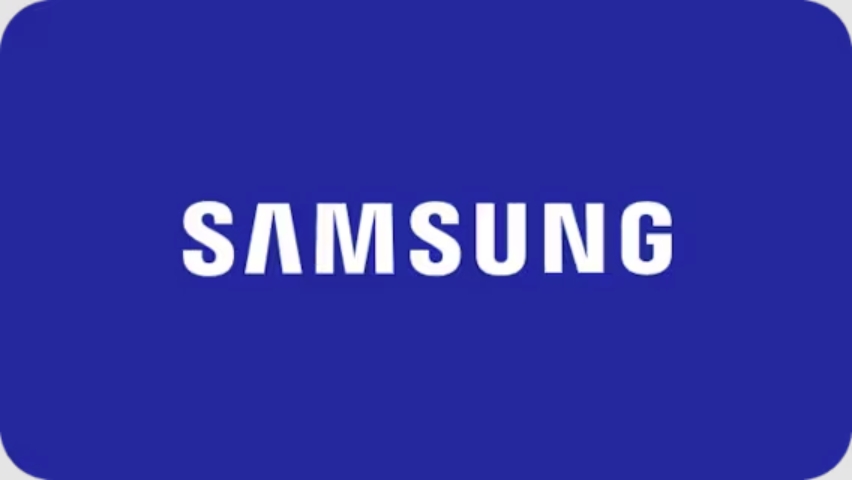 Case Study: TRIZ at Samsung Electronics
Case Study: TRIZ at Samsung Electronics- Company: Samsung Electronics, Suwon, South Korea (TRIZ implementation began in the early 2000s)
- What Was Done: Samsung implemented TRIZ (Theory of Inventive Problem Solving) methodologies in its product development process. This systematic approach has helped engineers and developers to overcome design challenges and generate innovative solutions.
- Results/Impact: Samsung had early successes with TRIZ, saving over $100 million in its first few projects. The application of TRIZ principles has significantly enhanced Samsung's product innovation capabilities, leading to a multitude of patented technologies and successful consumer products. The structured approach to innovation has been credited with helping Samsung become a leading global technology company.
- Contradiction Matrix: A tool to identify and solve technical contradictions by matching them with inventive principles.
- The application of the contradiction matrix in the automotive industry has led to innovations like adjustable headlights, which solve the contradiction between illuminating the road effectively and avoiding blinding oncoming traffic.
- The application of the contradiction matrix in the automotive industry has led to innovations like adjustable headlights, which solve the contradiction between illuminating the road effectively and avoiding blinding oncoming traffic.
- The Theory of Technical System Evolution: Understanding how systems evolve over time to predict future developments.
- This theory guided the development of digital cameras, predicting the evolution from chemical film-based photography to digital imaging technologies.
- This theory guided the development of digital cameras, predicting the evolution from chemical film-based photography to digital imaging technologies.
- ARIZ (Algorithm for Inventive Problem Solving): A step-by-step procedure to systematically address complex problems.
- ARIZ has been used in the engineering field to solve complex mechanical design problems, leading to innovative solutions that might not have been discovered through traditional brainstorming.
 Case Study: TRIZ Applied at BioLite
Case Study: TRIZ Applied at BioLite- Company: BioLite, New York, USA (Founded 2006)
- What Was Done: BioLite, a startup that develops off-grid energy products, applied TRIZ methods to solve design and usability issues in their portable stove products, which are used both for recreational outdoor activities and in emerging markets.
- Results/Impact: By applying TRIZ, BioLite was able to develop a low-cost, portable stove that also generates electricity to charge LED lights and mobile phones. This innovation not only met consumer needs in outdoor recreation markets but also addressed the larger problem of energy access in developing countries.
- Substance-Field Analysis: A method to visualize and solve problems by identifying the interactions between substances and fields.
- In chemical engineering, substance-field analysis has facilitated breakthroughs in reaction technologies by optimizing the interaction between reactants and catalysts.
- In chemical engineering, substance-field analysis has facilitated breakthroughs in reaction technologies by optimizing the interaction between reactants and catalysts.
- Read more about TRIZ methodology – here.
Challenges and Opportunities with Implementing TRIZ
- Learning Curve: Mastering TRIZ methodologies requires time and dedication.
- Organizations must invest in long training and development programs to fully leverage TRIZ's potential for innovation.
- Organizations must invest in long training and development programs to fully leverage TRIZ's potential for innovation.
- Adaptation to Non-Technical Fields: Extending TRIZ principles beyond engineering and technology.
- Efforts to apply TRIZ in business process improvement, marketing strategy, and even social innovation are expanding its applicability and demonstrating its versatility.
- Efforts to apply TRIZ in business process improvement, marketing strategy, and even social innovation are expanding its applicability and demonstrating its versatility.
- Integration with Other Innovation Approaches: Combining TRIZ with methodologies like design thinking and lean startup.
- By integrating TRIZ with these approaches, companies can create a comprehensive innovation strategy that leverages the best of each methodology.
- By integrating TRIZ with these approaches, companies can create a comprehensive innovation strategy that leverages the best of each methodology.
- Global Accessibility and Collaboration: Making TRIZ resources and knowledge widely available.
- The development of online platforms and communities dedicated to TRIZ facilitates global collaboration and knowledge sharing, increasing its impact on innovation.
- The development of online platforms and communities dedicated to TRIZ facilitates global collaboration and knowledge sharing, increasing its impact on innovation.
- Measuring Impact: Quantifying the effectiveness of TRIZ in driving innovation outcomes.
- Developing metrics to assess the impact of TRIZ on innovation processes and outcomes can help organizations justify the investment in TRIZ training and implementation.
- Developing metrics to assess the impact of TRIZ on innovation processes and outcomes can help organizations justify the investment in TRIZ training and implementation.
TRIZ stands as a testament to the power of systematic innovation, offering tools and methodologies that can guide individuals and organizations in developing creative solutions to complex problems. As the world continues to face unprecedented challenges, the principles of TRIZ remain as relevant as ever, providing a structured approach to unlock the potential for groundbreaking innovations across various domains.
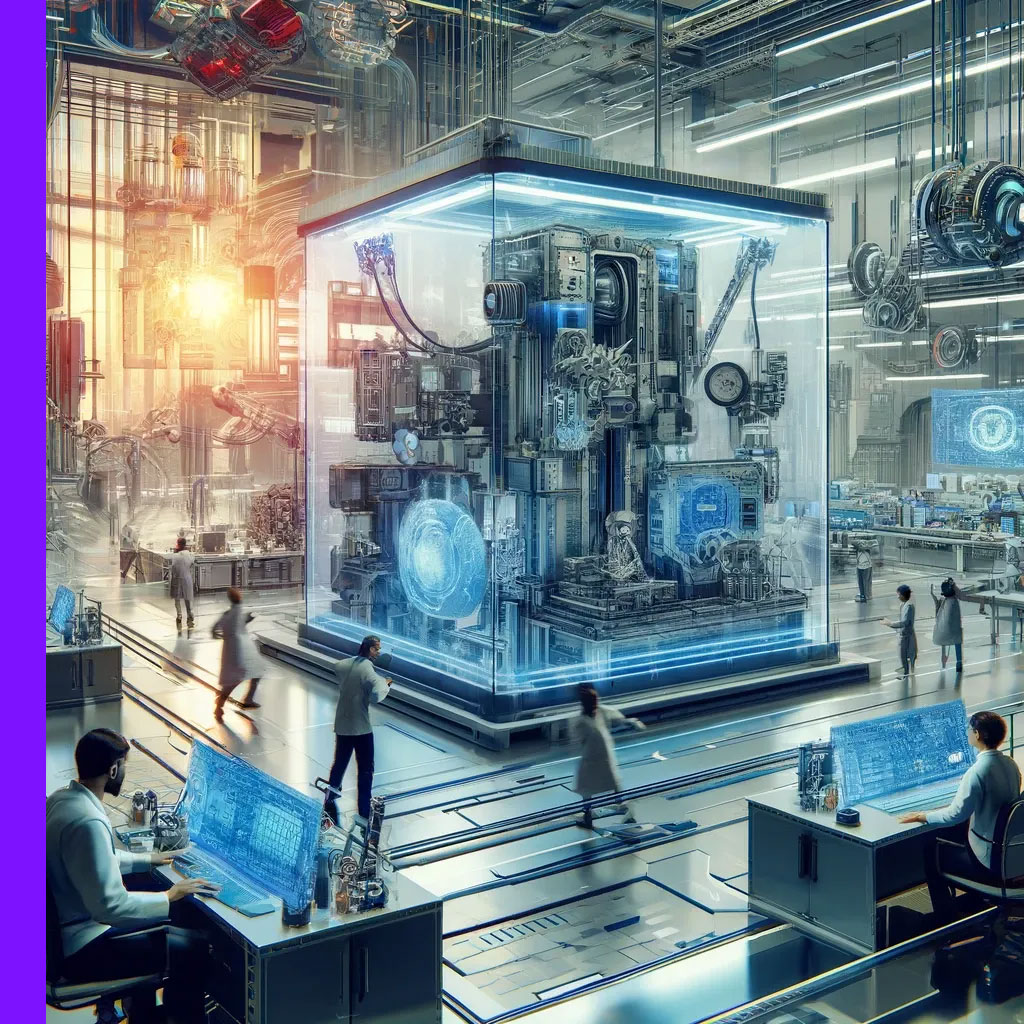
Systematic Inventive Thinking (SIT) in Technology
Systematic Inventive Thinking (SIT) is a methodology that harnesses the patterns of innovation to systematically produce creative solutions. Unlike traditional brainstorming methods that rely on random idea generation, SIT focuses on starting with an existing situation and applying inventive patterns to generate new ideas. This approach is particularly powerful in technology, where the rapid pace of change requires constant innovation to stay competitive. SIT provides a structured framework for creativity, encouraging innovators to look inside their current box to find solutions that are both novel and practical.
Key Principles of SIT in Driving Technological Innovation
- Subtraction: Removing an essential element of a product or system to discover new functionalities.
- Removing the physical keyboard from mobile phones led to the development of touchscreen interfaces, revolutionizing user interaction with devices.
- Removing the physical keyboard from mobile phones led to the development of touchscreen interfaces, revolutionizing user interaction with devices.
- Multiplication: Copying an element but changing it in some way.
- The introduction of dual-lens cameras in smartphones, improving photo quality and offering features like depth-of-field effects previously unattainable in mobile photography.
- The introduction of dual-lens cameras in smartphones, improving photo quality and offering features like depth-of-field effects previously unattainable in mobile photography.
- Task Unification: Assigning a new task to an existing element of a product or system.
- Smartwatches combine traditional time-telling with health monitoring and mobile connectivity, unifying tasks in a single wearable device.
 Case Study: Zoku's Quick Pop Maker
Case Study: Zoku's Quick Pop Maker- Company: Zoku, Hoboken, USA (Quick Pop Maker launched in 2009)
- What Was Done: Zoku applied SIT principles to develop the Quick Pop It by utilizing a unique and innovative method. Before first use, the Quick Pop Maker unit itself is stored in the freezer for about 24 hours to get thoroughly cold. This pre-freezing process allows the unit to absorb and store the cold. When you're ready to make ice pops, you take the Quick Pop Maker out of the freezer, insert the pop sticks, and pour in your juice or flavored liquid. The stored cold in the unit then freezes the liquid directly on the countertop without the need for continuous electrical freezing. This method allows for the rapid freezing of the pops in as little as seven minutes, making it a convenient and efficient way to create frozen treats without the need for an active electrical freezing mechanism during the making process. This product was born from identifying a specific market limitation and systematically inventing a solution.
- Inventive Patterns: This inventios combined the Unification and the Division patterns: The Freezer is used to provide the cold (Unification), and the Quick Pop Makers first absorb the cold, then passes it later on to the liquid (Division of cold transfer into two stages). It also demonstrates the attribute dependency pattern: The cold transfer is dependent on location: In the freezer the unit absorbs it, and on the countertop it is absorbed by the liquid. Often, Inventive ideas can be related to more than one pattern, which is great – since this overlap also assures that the coverage of inventions will be thorough and with less gaps of un-covered inventions between the various thinking tools.
- Results/Impact: The Quick Pop Maker became an instant hit, especially in the direct-to-consumer market, and won several design awards. Zoku's innovative approach distinguished them in the crowded kitchenware market and expanded their product line.
- Attribute Dependency: Changing the relationship between two attributes of a product or system.
- Adaptive cruise control in vehicles adjusts speed based on the distance to the car in front, creating a dynamic relationship between speed and spacing that enhances safety and convenience.
- Adaptive cruise control in vehicles adjusts speed based on the distance to the car in front, creating a dynamic relationship between speed and spacing that enhances safety and convenience.
- Division: Dividing a product or process into independent parts, or dividing resources in a new way in space.
- Modular computing platforms like Google's Project Ara aimed to allow users to customize and upgrade individual components of their smartphones, such as the camera or battery, independently.
Challenges and Opportunities with Implementing SIT in Technology
- Overcoming Resistance to Change: Encouraging teams to embrace unconventional thinking can be challenging.
- Fostering a culture of innovation and providing training on SIT principles can help teams break out of traditional thought patterns and embrace new approaches to problem-solving.
- Fostering a culture of innovation and providing training on SIT principles can help teams break out of traditional thought patterns and embrace new approaches to problem-solving.
- Integration with Existing Processes: Aligning SIT with the organization's innovation pipeline.
- Embedding SIT within the stages of product development ensures that the methodology complements existing processes, enhancing creativity without disrupting workflow.

Case Study: “Connect + Develop” by Procter & Gamble
- Company: Procter & Gamble, Cincinnati, USA (“Connect + Develop” launched in 2001)
- What Was Done: P&G embraced the SIT methodology through their "Connect + Develop" initiative. They opened up their innovation process to external ideas from businesses and inventors, systematically seeking innovative solutions for their product development.
- Results/Impact: This initiative led to a multitude of successful products and partnerships, such as the and the Mr. Clean Magic Eraser. It helped P&G to double their innovation success rate while reducing R&D costs and time to market.
- Scalability of Solutions: Ensuring that ideas generated through SIT can be scaled and implemented effectively.
- Early prototyping and testing are essential to validate the feasibility of SIT-generated solutions, ensuring they can be developed into viable products or services.
- Early prototyping and testing are essential to validate the feasibility of SIT-generated solutions, ensuring they can be developed into viable products or services.
- Measuring Impact: Quantifying the effectiveness of SIT in fostering innovati
- Establishing metrics to evaluate the success of SIT initiatives, such as the number of viable ideas generated or the speed of problem resolution, can demonstrate the value of the methodology.
- Establishing metrics to evaluate the success of SIT initiatives, such as the number of viable ideas generated or the speed of problem resolution, can demonstrate the value of the methodology.
- Adapting SIT for Rapid Technological Evolution: Keeping the SIT approach relevant in fast-changing technology
- Continual learning and adaptation of the SIT framework ensure that it remains effective in generating innovative solutions, even as technological paradigms shift.
- Continual learning and adaptation of the SIT framework ensure that it remains effective in generating innovative solutions, even as technological paradigms shift.
Systematic Inventive Thinking in technology offers a robust framework for innovation, enabling organizations to generate breakthrough ideas systematically. By embedding SIT principles into the fabric of their innovation strategies, companies can harness the full potential of their existing resources and capabilities, driving technological advancements that meet the evolving needs of users and markets. As technology continues to advance at an unprecedented pace, methodologies like SIT become invaluable tools for sustaining innovation and securing competitive advantage in the digital age.

The Closed World Principle (SIT)
The Closed World Principle is a fundamental concept within the Systematic Inventive Thinking (SIT) methodology, emphasizing the idea that innovative solutions are often found within the existing resources and constraints of a problem's "closed world." This principle encourages innovators to look internally, rather than externally, for solutions, leveraging existing components and relationships to create new value. In technology, where the temptation is always to add more features or to rely on the latest advancements, the Closed World Principle offers a counterintuitive yet effective approach to innovation, focusing on simplicity, efficiency, and the creative reimagining of current assets.
Applying the Closed World Principle in Technological Innovation
- Resource Optimization: Maximizing the use of existing components or features to solve new problems.
- The development of smartphone cameras to also function as barcode and QR code scanners exemplifies using existing resources to add value without introducing new hardware.
- The development of smartphone cameras to also function as barcode and QR code scanners exemplifies using existing resources to add value without introducing new hardware.
- Functional Fixedness Overcoming: Challenging the conventional uses of a component or system to discover new applications.
- Utilizing Wi-Fi signals for indoor positioning and navigation in places where GPS is unreliable demonstrates an innovative use of existing technology beyond its original purpose.
- Utilizing Wi-Fi signals for indoor positioning and navigation in places where GPS is unreliable demonstrates an innovative use of existing technology beyond its original purpose.
- Constraint-Led Innovation: Using limitations as a catalyst for creativity and innovation.
- The creation of efficient data compression algorithms was driven by the need to improve the speed and performance of internet services within the bandwidth constraints of existing networks.
 Case Study: GoPro’s Hero Camera
Case Study: GoPro’s Hero Camera- Company: GoPro, San Mateo, USA (First camera released in 2004)
- What Was Done: GoPro's initial product, the Hero camera, was designed using the Closed World Principle by simplifying the camera to its most essential functions for capturing action sports. It was compact, rugged, and wearable, designed with the immediate 'world' of the action-sports enthusiast in mind.
- Results/Impact: : GoPro carved out a new niche in the camera industry, with the Hero becoming synonymous with action cameras. The company grew rapidly, with the cameras becoming popular not just among sports enthusiasts but also with a broader consumer base for capturing personal adventures.
- Integration for Innovation: Combining existing elements in novel ways to create new functionalities.
- The integration of touchscreens with mobile devices transformed user interaction, demonstrating how combining existing technologies can lead to breakthrough innovations.
- The integration of touchscreens with mobile devices transformed user interaction, demonstrating how combining existing technologies can lead to breakthrough innovations.
- Simplification for Usability and Efficiency: Removing or consolidating components to enhance product usability and performance.
- E-ink technology in e-readers simplifies display technology, focusing on readability and battery efficiency, catering specifically to the needs of avid readers.
Challenges and Opportunities in Leveraging the Closed World Principle
- Balancing Simplification with Functionality: Ensuring that the drive for simplicity does not compromise the essential functionalities users expect.
- Innovators must carefully evaluate which features or components can be simplified or reimagined without detracting from the core value proposition of their technology.
- Innovators must carefully evaluate which features or components can be simplified or reimagined without detracting from the core value proposition of their technology.
- Encouraging a Mindset Shift: Cultivating an organizational culture that appreciates the value of looking inward for innovation.
- Workshops and training sessions on the Closed World Principle can help team members adopt this perspective, enhancing their ability to innovate within constraints.
- Workshops and training sessions on the Closed World Principle can help team members adopt this perspective, enhancing their ability to innovate within constraints.
- Identifying Hidden Opportunities: Recognizing the untapped potential of existing resources and technologies.
- Regular review and brainstorming sessions focused on current assets can uncover new opportunities for innovation that might otherwise be overlooked.
- Regular review and brainstorming sessions focused on current assets can uncover new opportunities for innovation that might otherwise be overlooked.
- Overcoming Industry Norms: Challenging the status quo and industry trends that favor adding new features and technologies.
- Case studies and success stories of innovations achieved through the Closed World Principle can inspire teams to pursue internal innovations despite external pressures.
- Case studies and success stories of innovations achieved through the Closed World Principle can inspire teams to pursue internal innovations despite external pressures.
- Adapting to Rapid Technological Changes: Maintaining the relevance of the Closed World Principle in fast-evolving technological landscapes.
- Continuous learning and flexibility are essential for innovators to apply the Closed World Principle effectively, even as the definition of the "closed world" evolves with technological advancements.
- Continuous learning and flexibility are essential for innovators to apply the Closed World Principle effectively, even as the definition of the "closed world" evolves with technological advancements.
The Closed World Principle offers a powerful lens through which to view innovation, especially in the technology sector, where the race for the latest advancement often overshadows the potential of existing resources. By focusing on the creative reconfiguration of what is already at hand, innovators can unlock new value, drive efficiency, and lead their fields in unexpected and impactful directions.

Innovation without Technology
Innovation without technology emphasizes creativity and ingenuity in improving processes, services, and strategies without the direct application of new technological tools or digital advancements. This approach underscores the value of non-technical innovations that can lead to significant improvements in efficiency, customer satisfaction, and overall effectiveness across various sectors. It reminds us that innovation is not solely the domain of engineers and scientists but also of thinkers, strategists, and anyone committed to finding better ways to achieve goals.
Key Areas of Non-Technological Innovation
- Process Innovation: Enhancing or re-engineering processes to improve efficiency and productivity.
- Toyota’s implementation of the Just-In-Time (JIT) inventory system revolutionized manufacturing processes, significantly reducing waste and improving efficiency without relying on new technology.

Case Study: IKEA's Flat-Pack furniture
- Company: IKEA, Leiden, Netherlands (Established 1943)
- What Was Done: IKEA innovated in the retail industry by designing flat-pack furniture that customers could assemble at home, significantly reducing shipping and storage costs. The key to this innovation was not in the use of advanced technology but in the design of the furniture itself and its packaging, using sustainable and recyclable cardboard materials.
- Results/Impact: This approach not only made furniture more affordable and accessible to a broader audience but also minimized environmental impact by reducing the carbon footprint associated with transportation and packaging waste. IKEA's innovation led to a revolution in the furniture industry, influencing many other companies to adopt similar practices.
- Service Innovation: Creating new services or improving existing ones to meet evolving customer needs more effectively.
- Starbucks’ introduction of the concept of coffee shops as community spaces transformed the customer experience, setting a new standard in the retail industry.
- Starbucks’ introduction of the concept of coffee shops as community spaces transformed the customer experience, setting a new standard in the retail industry.
- Business Model Innovation: Developing new ways of conducting business, generating revenue, and delivering value to customers.
- Dollar Shave Club disrupted the grooming industry with a direct-to-consumer subscription model, delivering razors and grooming products. This approach cut out the middleman, offering convenience and savings, and sparked a shift towards subscription services in various retail sectors.
- Dollar Shave Club disrupted the grooming industry with a direct-to-consumer subscription model, delivering razors and grooming products. This approach cut out the middleman, offering convenience and savings, and sparked a shift towards subscription services in various retail sectors.
- Social Innovation: Addressing social challenges with novel solutions that lead to sustainable and impactful changes.
- The Grameen Bank’s microfinancing model provides small loans to entrepreneurs in developing countries, empowering them to start businesses without the need for traditional collateral.
- The Grameen Bank’s microfinancing model provides small loans to entrepreneurs in developing countries, empowering them to start businesses without the need for traditional collateral.
- Organizational Innovation: Changing internal practices, corporate culture, or management strategies to enhance performance and adaptability.
- Zappos’ focus on company culture and employee happiness as a business strategy has led to high customer satisfaction and loyalty, proving that organizational changes can be innovative and impactful.
Challenges and Opportunities in Pursuing Innovation Without Technology
- Resource Constraints: Finding innovative solutions within limited resource environments encourages creativity but requires effective management and prioritization.
- Non-profits often operate under tight budgets, leading them to develop innovative, low-cost strategies for fundraising and service delivery.
- Non-profits often operate under tight budgets, leading them to develop innovative, low-cost strategies for fundraising and service delivery.
- Scaling Impact: Expanding the reach and effectiveness of non-technological innovations can be challenging but also rewarding.
- Khan Academy started with simple, filmed tutorials and has grown into a global educational platform through strategic partnerships and community engagement.
- Khan Academy started with simple, filmed tutorials and has grown into a global educational platform through strategic partnerships and community engagement.
- Cultural and Behavioral Change: Implementing innovations that require shifts in behavior or culture demands thoughtful strategy and engagement.
- The success of public health campaigns, like anti-smoking efforts, often hinges on changing social norms and behaviors through creative and non-technological means.
- The success of public health campaigns, like anti-smoking efforts, often hinges on changing social norms and behaviors through creative and non-technological means.
- Measurement and Evaluation: Assessing the impact of non-technological innovations requires developing appropriate metrics and evaluation frameworks.
- Social impact assessments and performance metrics tailored to specific objectives help organizations measure the effectiveness of their innovative strategies.
- Social impact assessments and performance metrics tailored to specific objectives help organizations measure the effectiveness of their innovative strategies.
Innovation without technology showcases the breadth and depth of human creativity in solving problems and improving our world. By expanding our understanding of what it means to innovate, we can appreciate the myriad ways in which progress can be achieved, beyond just the technological realm. This approach not only enriches our collective efforts to advance society but also highlights the importance of diverse thinking and inclusivity in the innovation process.
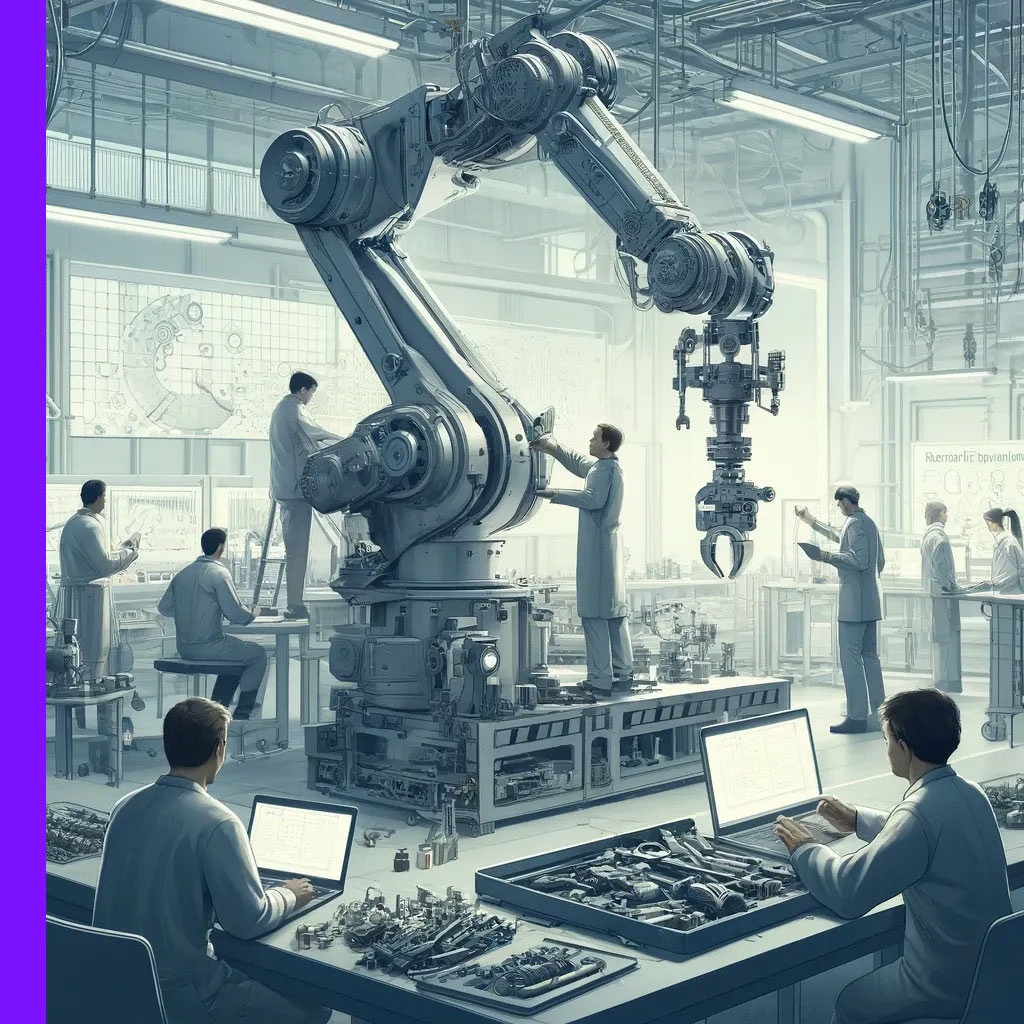
Reverse Engineering
Reverse engineering is a process where a product, device, or system is deconstructed to reveal its designs, architecture, or to extract knowledge from the object about its functioning and structural integrity. This technique is widely used across various industries for analyzing competitors’ products, enhancing product features, improving interoperability, or for educational purposes. In technology, reverse engineering plays a crucial role in software development, hardware modification, and cybersecurity, providing insights that can lead to innovations or improvements without starting from scratch.
Key Aspects of Reverse Engineering in Technological Innovation
- Product Improvement and Innovation: Analyzing competitors' products to understand their strengths and weaknesses.
- By reverse engineering generic medications, pharmaceutical companies can understand the composition and manufacturing process, allowing them to create comparable or improved versions.

Case Study: Fitbit's Competitive Analysis through Reverse Engineering
- Company: Fitbit, San Francisco, California, USA (Founded in 2007)
- What Was Done: Fitbit, a leader in the health and wellness industry, has utilized reverse engineering to analyze competitors' products. This process involves disassembling competitors' devices to understand their design, functionality, and manufacturing techniques, allowing Fitbit to innovate and improve their own products.
- Results/Impact: Through reverse engineering, Fitbit has been able to stay at the forefront of the wearable technology market, continuously improving product durability, battery life, and user interface. This strategy has helped Fitbit maintain a competitive edge, leading to a significant market share in the wearable device industry.
- Compatibility and Interoperability: Ensuring new products can operate with existing systems or products.
- Developers often reverse engineer drivers or communication protocols to ensure new hardware is compatible with existing operating systems or devices.
- Developers often reverse engineer drivers or communication protocols to ensure new hardware is compatible with existing operating systems or devices.
- Security Enhancement: Identifying vulnerabilities in software and hardware to enhance security measures.
- Cybersecurity professionals reverse engineer malware to understand its mechanics and develop effective countermeasures.
- Cybersecurity professionals reverse engineer malware to understand its mechanics and develop effective countermeasures.
- Legacy System Upgradation: Extracting the design principles of outdated systems to modernize them without complete redevelopment.
- Engineers reverse engineer old aircraft parts for which original designs are lost or outdated, facilitating the production of compatible new parts.
- Engineers reverse engineer old aircraft parts for which original designs are lost or outdated, facilitating the production of compatible new parts.
- Learning and Educational Purposes: Dissecting technologies to understand their underlying principles for educational enhancement.
- Academic institutions often reverse engineer older technologies to teach students about fundamental engineering and design principles.
Challenges and Opportunities in Reverse Engineering
- Legal and Ethical Considerations: Navigating the fine line between innovation and infringement.
- Companies must ensure that reverse engineering efforts comply with intellectual property laws and ethical guidelines, which vary significantly by country and industry.
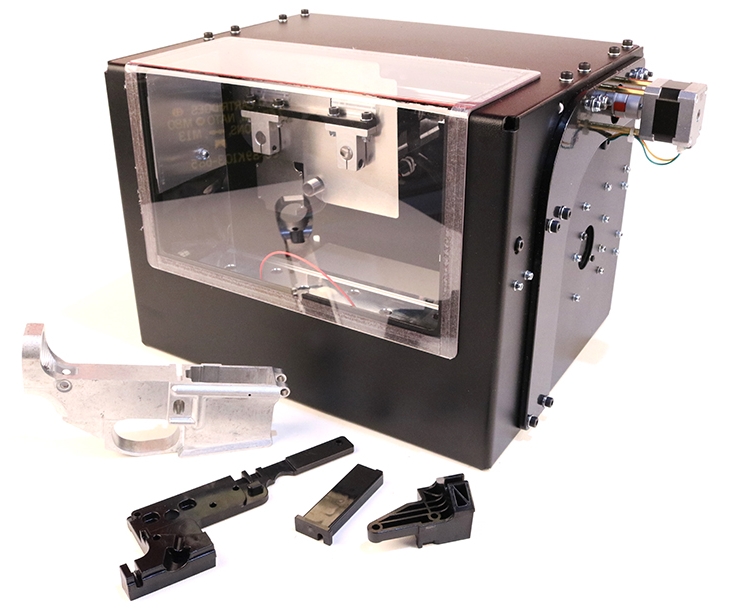 Case Study: Ghost Gunner by Defense Distributed
Case Study: Ghost Gunner by Defense Distributed- Company: Defense Distributed, Austin, Texas, USA) Founded in 2012)
- What Was Done: Defense Distributed created the Ghost Gunner, a compact CNC machine that allows individuals to manufacture gun parts by reverse engineering existing designs. The project challenges traditional manufacturing and gun control laws by enabling the creation of firearms without serial numbers.
- Results/Impact: The Ghost Gunner project has sparked significant debate on gun control, manufacturing rights, and digital rights. While controversial, it showcases the power of reverse engineering and distributed manufacturing to challenge existing industrial and regulatory paradigms, leading to discussions on innovation, freedom, and control in the digital age.
- Technical Complexity: Dealing with sophisticated technologies that may be difficult to disassemble and analyze.
- The reverse engineering of modern microprocessors requires sophisticated equipment and deep technical knowledge due to their complexity and miniaturization.
- The reverse engineering of modern microprocessors requires sophisticated equipment and deep technical knowledge due to their complexity and miniaturization.
- Resource Intensity: Allocating significant time and resources to reverse engineer a product or system.
- The process can be resource-intensive, requiring specialized tools and expertise, making it a costly endeavor for many organizations.
- The process can be resource-intensive, requiring specialized tools and expertise, making it a costly endeavor for many organizations.
- Keeping Pace with Technology: The rapid evolution of technology means that reverse-engineered solutions may quickly become outdated.
- Innovators must continuously adapt their knowledge and tools to stay relevant in fast-evolving sectors like software development and cybersecurity.
- Innovators must continuously adapt their knowledge and tools to stay relevant in fast-evolving sectors like software development and cybersecurity.
- Cultivating Skilled Professionals: Developing a workforce skilled in reverse engineering techniques.
- The scarcity of skilled professionals in reverse engineering necessitates investment in training and education to build a proficient talent pool.
- The scarcity of skilled professionals in reverse engineering necessitates investment in training and education to build a proficient talent pool.
Reverse engineering represents a critical methodology in the innovation ecosystem, offering a pathway to understand and improve upon existing technologies. By carefully navigating its challenges and leveraging its opportunities, organizations can uncover valuable insights that drive technological advancement, enhance security, ensure compatibility, and foster learning.

Innovations Like Cloud Computing
Cloud computing represents a transformative innovation that has reshaped the landscape of technology and business operations. By offering computing resources as a service over the internet, cloud computing has enabled organizations to scale, innovate, and adapt more rapidly than ever before. This model provides on-demand access to a vast pool of resources, including storage, servers, databases, networking, software, analytics, and intelligence, allowing businesses to achieve more with less upfront investment.
Key Benefits of Cloud Computing in Driving Innovation
- Scalability and Flexibility: Adjusting resources according to fluctuating demand.
- Netflix leverages cloud computing to manage its massive and fluctuating user demand, ensuring smooth streaming services during peak hours without maintaining costly infrastructure.
- Netflix leverages cloud computing to manage its massive and fluctuating user demand, ensuring smooth streaming services during peak hours without maintaining costly infrastructure.
- Cost Efficiency: Reducing upfront costs and shifting to a pay-as-you-go model.
- Startups like Dropbox have utilized cloud services to offer extensive storage solutions to millions of users worldwide without the need for significant initial capital investment in hardware.
 Case Study: Amazon Web Services (AWS)
Case Study: Amazon Web Services (AWS)- Company: : Amazon Web Services, Seattle, Washington, USA (Launched in 2006)
- What Was Done: AWS pioneered cloud computing by offering a comprehensive suite of cloud services, including computing power, storage options, and networking capabilities on a pay-as-you-go basis. This innovation allowed businesses of all sizes to access scalable, reliable, and secure computing resources without the need for significant upfront capital investments in physical infrastructure.
- Results/Impact: AWS's cloud computing services have transformed the IT industry, enabling startups to scale quickly and large enterprises to become more agile. AWS has become a leader in the cloud computing space, contributing significantly to Amazon's revenue and continuously innovating to offer new services in response to evolving customer needs.
- Collaboration and Accessibility: Facilitating better collaboration through easy access to data and applications from anywhere.
- Google Workspace (formerly G Suite) enables real-time collaboration across the globe, enhancing productivity and fostering innovation without geographical constraints.
- Google Workspace (formerly G Suite) enables real-time collaboration across the globe, enhancing productivity and fostering innovation without geographical constraints.
- Speed and Performance: Deploying services rapidly across a global network of secure data centers.
- Amazon Web Services (AWS) provides businesses with the ability to quickly launch and scale applications worldwide, offering low-latency and high-performance computing solutions.
- Amazon Web Services (AWS) provides businesses with the ability to quickly launch and scale applications worldwide, offering low-latency and high-performance computing solutions.
- Security and Compliance: Offering advanced security features that comply with regulatory standards.
- Microsoft Azure integrates advanced security technologies and adheres to a broad set of compliance standards, helping businesses protect their data and meet regulatory requirements.
Challenges and Opportunities in Cloud Computing
- Data Security and Privacy: Protecting sensitive information in a shared and distributed environment.
- As cloud services store vast amounts of sensitive data, providers and users must implement robust security measures and policies to protect data integrity and privacy.
- As cloud services store vast amounts of sensitive data, providers and users must implement robust security measures and policies to protect data integrity and privacy.
- Managing Multicloud Environments: Navigating complexity in using multiple cloud services and providers.
- Organizations like VMware offer solutions to manage multicloud environments effectively, addressing challenges related to integration, operation, and governance.
- Organizations like VMware offer solutions to manage multicloud environments effectively, addressing challenges related to integration, operation, and governance.
- Compliance and Legal Issues: Ensuring cloud services comply with local and international laws.
- Cloud providers and users must stay informed about evolving legal frameworks and compliance requirements to avoid legal pitfalls and ensure smooth operations.
- Cloud providers and users must stay informed about evolving legal frameworks and compliance requirements to avoid legal pitfalls and ensure smooth operations.
- Skill Gaps and Training Needs: Bridging the gap in cloud computing skills among the workforce.
- The rapid evolution of cloud technologies necessitates ongoing education and training programs to equip professionals with the latest skills and knowledge.
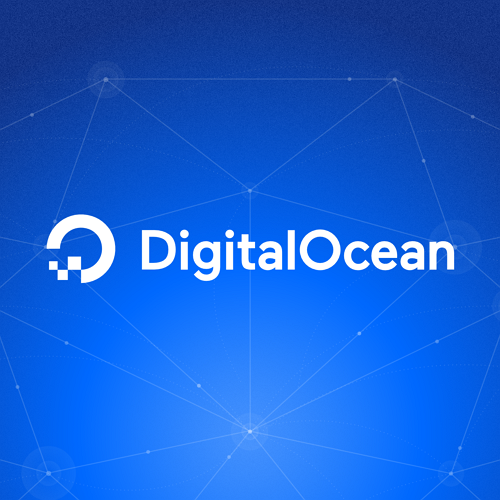 Case Study: DigitalOcean
Case Study: DigitalOcean- Company: DigitalOcean, New York City, New York, USA (Founded in 2011)
- What Was Done: DigitalOcean provided a cloud computing platform focused on simplifying web infrastructure for software developers. Unlike its larger competitors, DigitalOcean focused on offering straightforward, cost-effective solutions that cater to the needs of small to medium-sized businesses and individual developers, with an emphasis on ease of use and simplicity.
- Results/Impact: DigitalOcean has made a significant impact in the cloud computing market by democratizing access to cloud resources, allowing smaller companies and individual developers to deploy and manage applications in the cloud easily. This approach has led to rapid growth and a loyal customer base, positioning DigitalOcean as a leading provider of cloud services for developers around the world.
- Dependency and Vendor Lock-in: Mitigating risks associated with dependency on a single cloud provider.
- Strategies such as adopting open standards and ensuring portability can help organizations avoid vendor lock-in and maintain flexibility in their cloud computing choices.
- Strategies such as adopting open standards and ensuring portability can help organizations avoid vendor lock-in and maintain flexibility in their cloud computing choices.
Cloud computing continues to be a pivotal force in technological innovation, offering a foundation for new business models, services, and products. As organizations navigate the opportunities and challenges presented by cloud computing, the potential for innovation expands, driving efficiency, collaboration, and transformation across industries.
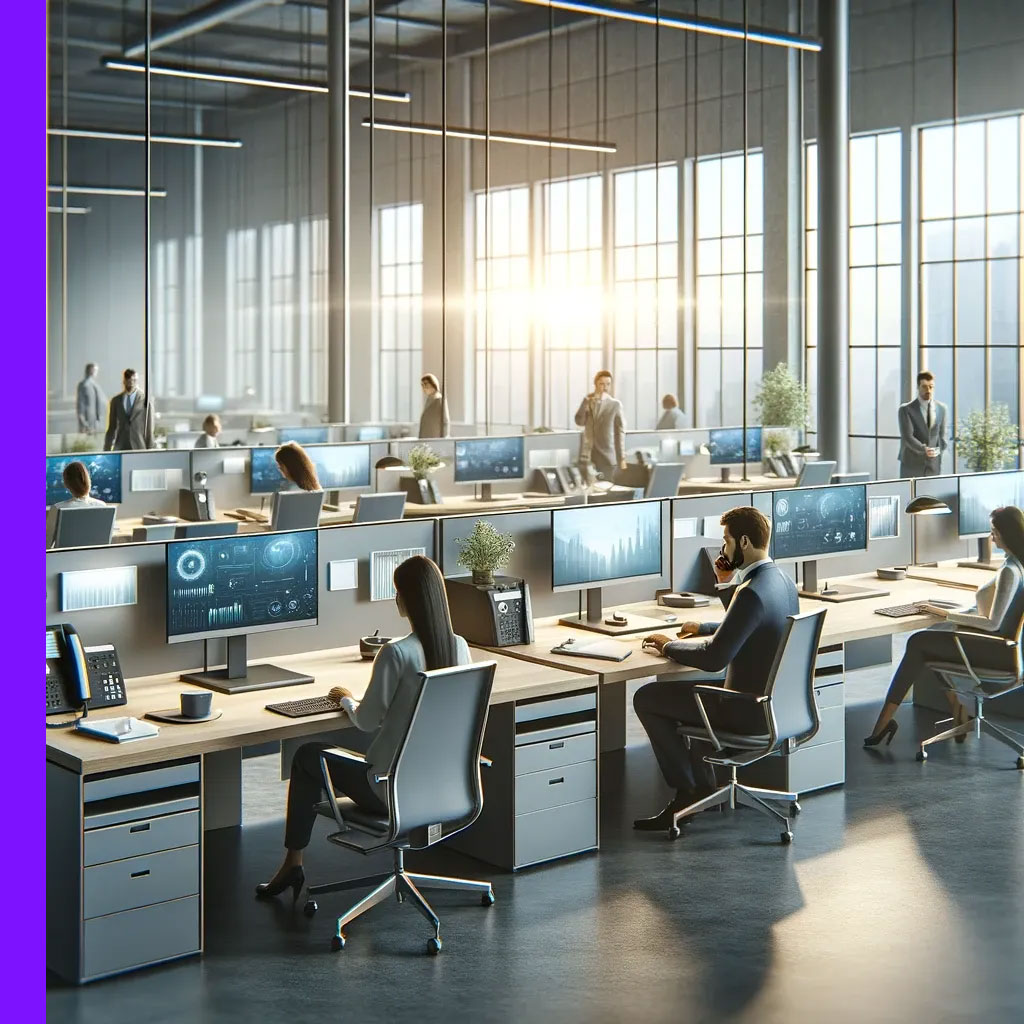
Innovation without Disruption Avaya
Innovation without Disruption is a strategy that focuses on introducing new technologies or processes that integrate seamlessly with existing systems and workflows, minimizing downtime and user resistance. Avaya, a global leader in digital communication products, services, and solutions, exemplifies this approach by providing businesses with innovative solutions that enhance communication and collaboration without disrupting their current operations.
Strategies Avaya Employs to Innovate without Disruption
- Incremental Innovation: Gradually improving products and services to ensure compatibility and ease of integration.
- Avaya’s development of unified communications solutions that integrate with existing telephony and IT infrastructure allows businesses to adopt new features without overhauling their current systems.
- Avaya’s development of unified communications solutions that integrate with existing telephony and IT infrastructure allows businesses to adopt new features without overhauling their current systems.
- User-Centric Design: Focusing on the user experience to ensure new technologies are intuitive and require minimal training.
- The design of Avaya’s user interfaces emphasizes simplicity and familiarity, enabling users to adopt new communication tools with little to no learning curve.
- The design of Avaya’s user interfaces emphasizes simplicity and familiarity, enabling users to adopt new communication tools with little to no learning curve.
- Flexible Deployment Options: Offering a range of deployment models, including on-premises, cloud, and hybrid solutions.
- This flexibility allows organizations to transition to cloud communications at their own pace, aligning with their specific needs and avoiding disruption to their operations.
- This flexibility allows organizations to transition to cloud communications at their own pace, aligning with their specific needs and avoiding disruption to their operations.
- Integration with Existing Ecosystems: Ensuring new solutions work well within the customer’s existing technology ecosystem.
- Avaya’s communication solutions are designed to integrate seamlessly with a wide range of business applications and systems, enhancing functionality while preserving existing investments.
- Avaya’s communication solutions are designed to integrate seamlessly with a wide range of business applications and systems, enhancing functionality while preserving existing investments.
- Customizable Solutions: Providing options to customize and tailor solutions to fit the unique requirements of each business.
- Avaya’s platforms offer extensive customization capabilities, allowing businesses to implement new communication strategies that align with their operational workflows and objectives.
Challenges and Opportunities in Implementing Non-Disruptive Innovation
- Balancing Innovation and Stability: Ensuring that the introduction of new features does not compromise the reliability of existing systems.
- Avaya invests in rigorous testing and validation processes to ensure that new updates and features enhance system performance without risking stability.
- Avaya invests in rigorous testing and validation processes to ensure that new updates and features enhance system performance without risking stability.
- Overcoming Resistance to Change: Addressing user apprehension towards adopting new technologies.
- By providing comprehensive support and training resources, Avaya helps users understand the benefits of new solutions, facilitating smoother transitions and adoption.
- By providing comprehensive support and training resources, Avaya helps users understand the benefits of new solutions, facilitating smoother transitions and adoption.
- Keeping Pace with Technological Advancements: Continuously innovating while maintaining a non-disruptive approach.
- Avaya’s commitment to research and development ensures that its solutions remain at the forefront of communication technology, offering state-of-the-art features that can be adopted without disruption.
- Avaya’s commitment to research and development ensures that its solutions remain at the forefront of communication technology, offering state-of-the-art features that can be adopted without disruption.
- Customization vs. Complexity: Offering customizable solutions while avoiding undue complexity in deployment and management.
- Avaya’s platforms are designed with modularity and scalability in mind, allowing businesses to add new capabilities as needed without introducing unnecessary complexity.
- Avaya’s platforms are designed with modularity and scalability in mind, allowing businesses to add new capabilities as needed without introducing unnecessary complexity.
Innovation without disruption is a nuanced approach that requires a deep understanding of customer needs, meticulous planning, and a commitment to delivering solutions that enhance functionality without imposing significant changes on users or existing infrastructures. Avaya's success in this area underscores the value of this strategy in ensuring that technological advancements deliver tangible benefits while respecting the operational realities of businesses.
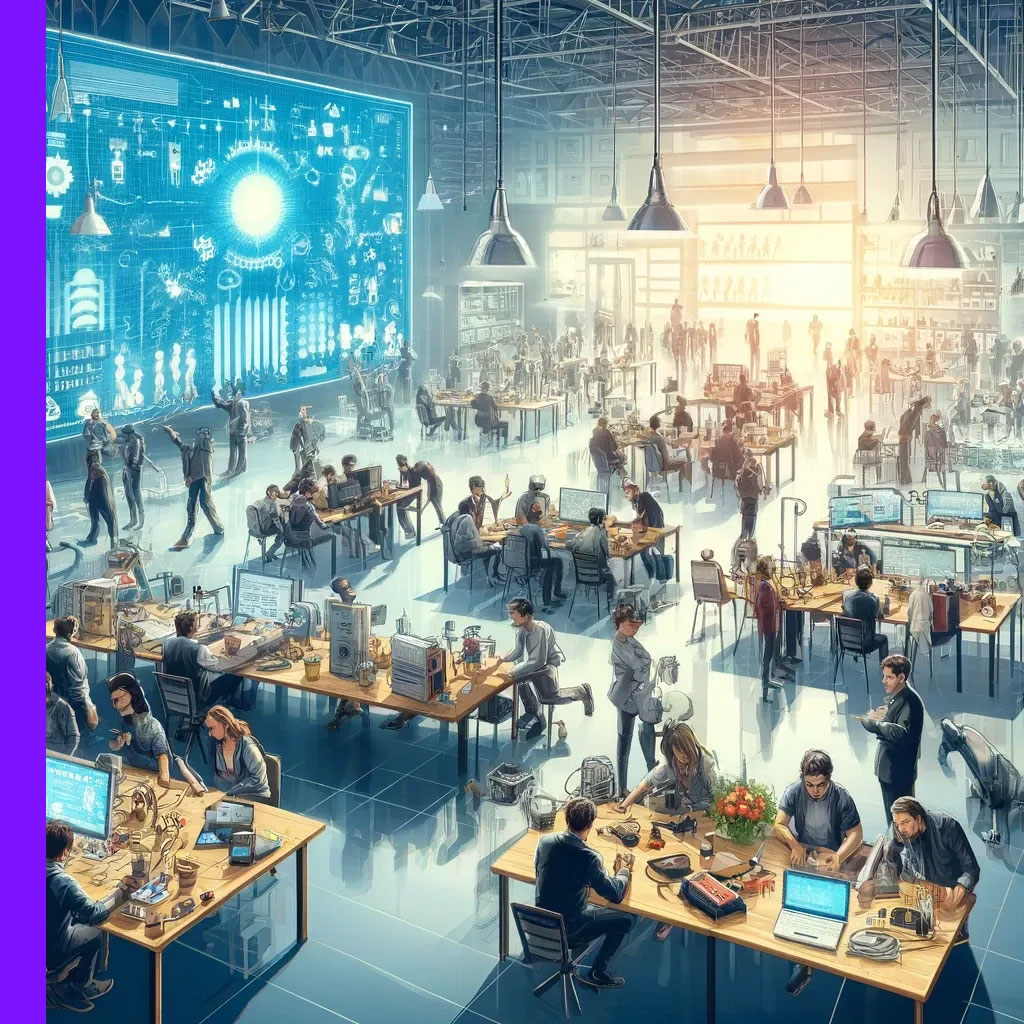
Innovation Challenge
Innovation challenges are structured competitions designed to inspire creativity and problem-solving by inviting participants to develop innovative solutions to specific issues. These challenges often target entrepreneurs, students, professionals, and researchers, encouraging them to think outside the box and apply their skills to real-world problems. By setting clear objectives and offering rewards, innovation challenges can accelerate the development of new ideas, technologies, and processes across various sectors.
Key Elements of Successful Innovation Challenges
- Clearly Defined Objectives: Establishing specific, measurable goals for what the challenge aims to achieve.
- The XPRIZE Foundation organizes competitions with precise objectives, such as creating technology to clean oceans or developing methods for carbon capture, driving focused innovation efforts.
- The XPRIZE Foundation organizes competitions with precise objectives, such as creating technology to clean oceans or developing methods for carbon capture, driving focused innovation efforts.
- Diverse Participation: Encouraging individuals and teams from different backgrounds and disciplines to contribute.
- NASA’s challenges often attract a wide range of participants, from independent inventors to academic institutions, fostering diverse approaches to solving complex space-related problems.
- NASA’s challenges often attract a wide range of participants, from independent inventors to academic institutions, fostering diverse approaches to solving complex space-related problems.
- Adequate Incentives: Offering prizes, funding, mentorship, or other forms of support to motivate participation and reward innovation.
- The Hult Prize provides a substantial financial award and mentorship to student teams developing social enterprises, incentivizing ambitious projects that address global issues.
- The Hult Prize provides a substantial financial award and mentorship to student teams developing social enterprises, incentivizing ambitious projects that address global issues.
- Collaboration and Networking Opportunities: Facilitating connections among participants, industry experts, and potential investors.
- Hackathons and innovation bootcamps create environments where participants can collaborate, receive feedback from mentors, and network with potential investors, enhancing the value of their solutions.
- Hackathons and innovation bootcamps create environments where participants can collaborate, receive feedback from mentors, and network with potential investors, enhancing the value of their solutions.
- Access to Resources and Tools: Providing participants with the necessary resources, data, and technologies to develop their solutions.
- Tech giants like Google and IBM offer cloud credits, APIs, and access to advanced technologies during their challenges, enabling participants to build sophisticated solutions.
Challenges and Opportunities in Hosting Innovation Challenges
- Engaging the Right Audience: Attracting participants with the skills and motivation to address the challenge’s objectives.
- Effective marketing and outreach strategies are essential to ensure the challenge reaches a wide and relevant audience, maximizing the potential for innovative solutions.
- Effective marketing and outreach strategies are essential to ensure the challenge reaches a wide and relevant audience, maximizing the potential for innovative solutions.
- Ensuring Fairness and Transparency: Developing clear criteria for judging and selecting winners.
- Establishing an impartial panel of judges and transparent evaluation criteria helps maintain the integrity of the challenge and ensures participants feel fairly treated.
- Establishing an impartial panel of judges and transparent evaluation criteria helps maintain the integrity of the challenge and ensures participants feel fairly treated.
- Scaling and Implementing Solutions: Translating winning ideas into viable products, services, or policies.
- Partnerships with industry stakeholders and access to acceleration programs can facilitate the further development and scaling of innovative solutions post-challenge.
- Partnerships with industry stakeholders and access to acceleration programs can facilitate the further development and scaling of innovative solutions post-challenge.
- Sustaining Interest and Momentum: Keeping participants engaged throughout the challenge and beyond.
- Regular updates, workshops, and interim milestones can help maintain participant engagement and momentum towards developing their solutions.
- Regular updates, workshops, and interim milestones can help maintain participant engagement and momentum towards developing their solutions.
Innovation challenges represent a powerful tool for stimulating creativity and advancing solutions to pressing problems. By carefully designing these challenges and supporting the development and implementation of winning ideas, organizations can harness collective intelligence to drive progress and innovation in their fields.
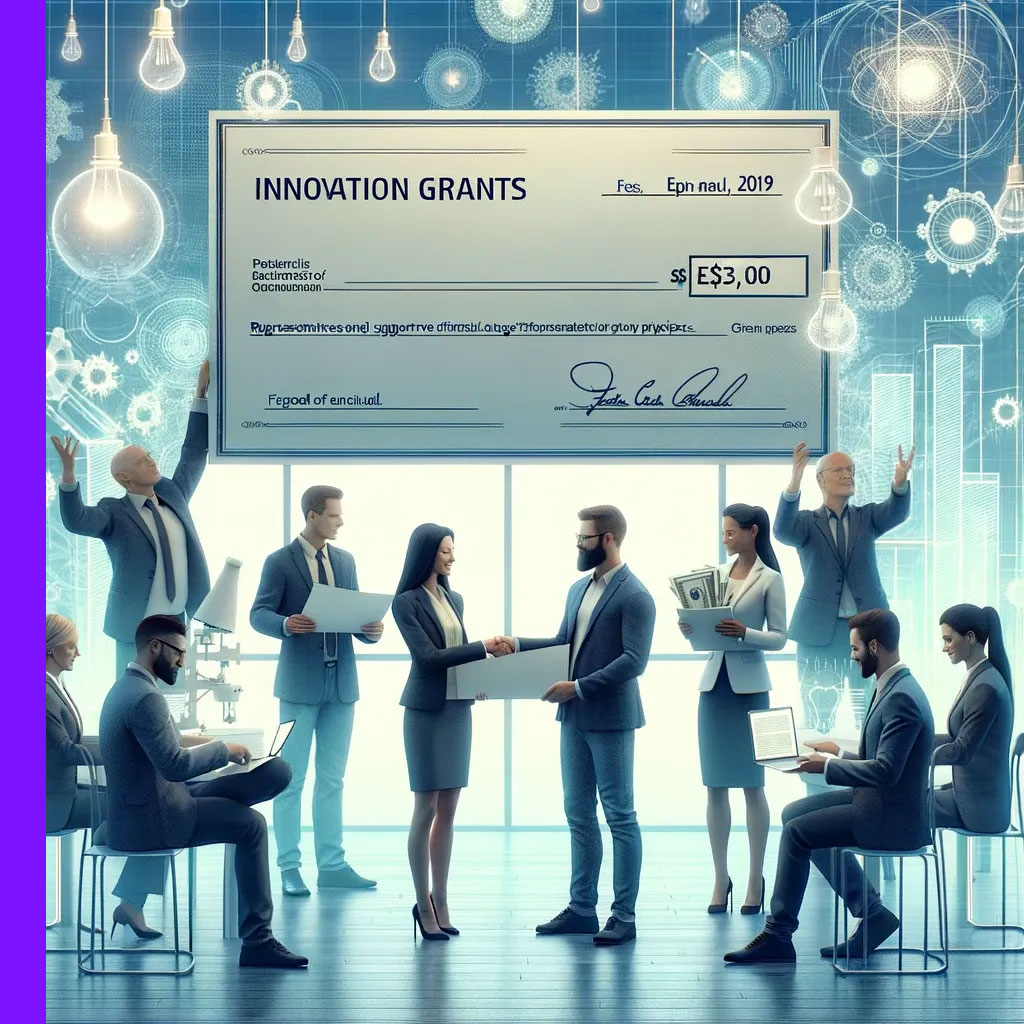
Innovation Grants
Innovation grants are financial awards provided by governments, foundations, corporations, and other organizations to support the development and implementation of novel ideas and technologies. These grants aim to stimulate research and development activities, encourage entrepreneurship, and facilitate the commercialization of innovative products, services, and processes. By offering funding without the requirement for repayment, innovation grants enable recipients to explore high-risk, high-reward projects that might otherwise lack the necessary resources to get off the ground.
Essential Components of Effective Innovation Grant Programs
- Targeted Focus Areas: Defining specific sectors or challenges where innovation is needed.
- The National Science Foundation (NSF) in the United States offers grants focused on emerging technologies and scientific discoveries, aiming to push the boundaries of knowledge and application in critical areas.
- The National Science Foundation (NSF) in the United States offers grants focused on emerging technologies and scientific discoveries, aiming to push the boundaries of knowledge and application in critical areas.
- Eligibility and Selection Criteria: Establishing clear guidelines for who can apply and how applications will be evaluated.
- The European Union’s Horizon 2020 program sets out detailed eligibility criteria and evaluation processes to ensure funding supports projects with the greatest potential for impact and innovation.
- The European Union’s Horizon 2020 program sets out detailed eligibility criteria and evaluation processes to ensure funding supports projects with the greatest potential for impact and innovation.
- Mentorship and Support Services: Providing grant recipients with access to expert advice, business development resources, and networking opportunities.
- Many innovation grant programs, such as those offered by the Small Business Innovation Research (SBIR) initiative, include provisions for mentorship and support to help recipients maximize the value of the grant.
- Many innovation grant programs, such as those offered by the Small Business Innovation Research (SBIR) initiative, include provisions for mentorship and support to help recipients maximize the value of the grant.
- Flexible Funding Mechanisms: Offering various types of financial support, from seed funding for initial exploration to substantial awards for full-scale development and commercialization.
- The Bill & Melinda Gates Foundation’s range of grants supports everything from early-stage research to the scaling of proven solutions in global health and development.
- The Bill & Melinda Gates Foundation’s range of grants supports everything from early-stage research to the scaling of proven solutions in global health and development.
- Monitoring and Evaluation: Tracking the progress and impact of funded projects to ensure accountability and inform future funding decisions.
- Granting organizations often require periodic reporting and outcomes assessment to evaluate the success of their investments and refine their grant-making strategies.
How to Secure Innovation Grants?
- Identify Your Goals and Needs
- Define the Scope: Clearly articulate the objectives, timeline, and budget of your project. Understand what you aim to achieve and how much funding you need to accomplish your goals.
- Define the Scope: Clearly articulate the objectives, timeline, and budget of your project. Understand what you aim to achieve and how much funding you need to accomplish your goals.
- Research Potential Grant Sources
- Government Agencies: Look for grants offered by government bodies such as the National Science Foundation (NSF), the Small Business Innovation Research (SBIR) program, or your country's equivalent.
- Private Foundations and Corporations: Investigate grants from private entities like the Bill & Melinda Gates Foundation, Google.org, or industry-specific organizations interested in supporting innovation in your field.
- Academic and Research Institutions: Explore opportunities within universities or research consortia that offer grants for collaborative projects or innovations in specific areas of study.
- Align Your Project with Grant Providers' Goals
- Match Interests: Ensure your project aligns with the grant provider’s objectives. Tailor your proposal to highlight how your innovation addresses the issues or areas of interest specified by the grant source.
- Match Interests: Ensure your project aligns with the grant provider’s objectives. Tailor your proposal to highlight how your innovation addresses the issues or areas of interest specified by the grant source.
- Prepare a Strong Application
- Craft a Compelling Proposal: Develop a clear, concise, and compelling grant proposal that outlines the problem, your innovative solution, its potential impact, and how the grant funds will be used.
- Demonstrate Feasibility and Sustainability: Include evidence of preliminary research, a solid business plan, or a prototype to show the feasibility of your project and how it will sustain itself after the grant period.
- Gather Supporting Documents: Prepare all required documentation, such as financial statements, proof of non-profit status (if applicable), and letters of support from partners or stakeholders.
- Seek Feedback Before Submission
- Consult Experts: Before submitting your application, get feedback from mentors, industry experts, or colleagues who have successfully secured grants. Use their insights to refine your proposal.
- Consult Experts: Before submitting your application, get feedback from mentors, industry experts, or colleagues who have successfully secured grants. Use their insights to refine your proposal.
- Submit Your Application and Follow Up
- Adhere to Guidelines: Carefully follow the application guidelines provided by the grant source. Pay attention to deadlines, submission formats, and specific requirements.
- Follow Up: After submitting your application, monitor its status and be prepared to provide additional information or participate in interviews if requested.
- Leverage Networking and Resources
- Attend Workshops and Seminars: Participate in grant writing workshops, seminars, or webinars to improve your skills and knowledge about the grant application process.
- Utilize Online Platforms: Websites like Grants.gov, the Foundation Center, or specific industry-related grant databases can be valuable resources for finding grant opportunities and application tips.
Securing an innovation grant requires diligence, persistence, and a strong value proposition. By systematically researching opportunities, meticulously preparing your application, and effectively communicating the significance of your innovation, you can enhance your chances of obtaining the funding necessary to bring your ideas to fruition.
Challenges and Opportunities in Providing Innovation Grants
- Balancing Risk and Reward: Investing in projects with the potential for significant impact but also a high risk of failure.
- Granting bodies must carefully assess potential projects to strike a balance between fostering groundbreaking innovations and managing the inherent risks of funding unproven ideas.
- Granting bodies must carefully assess potential projects to strike a balance between fostering groundbreaking innovations and managing the inherent risks of funding unproven ideas.
- Ensuring Broad and Inclusive Access: Making grant programs accessible to a diverse range of applicants, including underrepresented groups and regions.
- Initiatives to simplify application processes and outreach efforts targeting diverse communities can help ensure that innovation grants support a broad spectrum of innovators.
- Initiatives to simplify application processes and outreach efforts targeting diverse communities can help ensure that innovation grants support a broad spectrum of innovators.
- Sustaining Funding Levels: Maintaining adequate funding for innovation grants amidst fluctuating economic conditions and changing priorities.
- Securing long-term commitments from funding sources and demonstrating the economic and societal value of grant programs are crucial for their sustainability.
- Securing long-term commitments from funding sources and demonstrating the economic and societal value of grant programs are crucial for their sustainability.
- Scaling Successful Innovations: Assisting grant recipients in bringing their innovations to market and achieving widespread adoption.
- Collaboration with industry partners, investors, and other stakeholders can facilitate the transition from grant-funded projects to commercially viable products and services.
- Collaboration with industry partners, investors, and other stakeholders can facilitate the transition from grant-funded projects to commercially viable products and services.
Innovation grants play a vital role in the innovation ecosystem, providing essential financial support that enables individuals and organizations to pursue new ideas and solutions. Through careful design and management of grant programs, funding bodies can catalyze advancements that drive economic growth, address societal challenges, and contribute to the global body of knowledge and technology.

Innovation Theory
Innovation Theory encompasses a range of concepts and frameworks that seek to explain how and why innovation occurs, the processes through which new ideas and technologies are developed and adopted, and the impact of these innovations on economies, societies, and industries. From Schumpeter’s theory of creative destruction to contemporary models of open innovation, these theories provide insights into the dynamics of change and progress in various domains.
Key Theories and Models in Innovation
- Schumpeter's Theory of Creative Destruction: Arguing that innovation drives economic growth through a cycle of disrupting existing markets and creating new ones.
- Rogers' Diffusion of Innovations: Examining how, why, and at what rate new ideas and technology spread through cultures, highlighting the importance of early adopters and social networks.
- Christensen's Theory of Disruptive Innovation: Distinguishing between sustaining innovations that improve existing products and disruptive innovations that create entirely new markets.
- Open Innovation: Proposing that firms can and should use external ideas as well as internal ideas and paths to market as they look to advance their technology.
- The Triple Helix Model of Innovation: Suggesting that innovation results from a complex interaction among academia, industry, and government.
How to Apply the Innovation Theory
- Understand Key Innovation Theories
- Diffusion of Innovations Theory: Familiarize yourself with Everett Rogers’ theory on how, why, and at what rate new ideas and technology spread through cultures.
- Disruptive Innovation Theory: Study Clayton Christensen's concept of disruptive innovation, which describes how smaller companies with fewer resources can successfully challenge established businesses.
- Open Innovation Theory: Explore Henry Chesbrough's open innovation model, which suggests that companies can and should use external ideas as well as internal ideas to advance their technology.
- Blue Ocean Strategy: Investigate W. Chan Kim and Renée Mauborgne's strategy for creating uncontested market space and making the competition irrelevant.
- Assess Your Innovation Landscape
- Identify Your Needs: Determine where your organization or project currently stands in terms of innovation and where you want it to go. Assess your resources, capabilities, and the market environment.
- Analyze Trends and Patterns: Look for emerging trends in your industry and consider how innovations have historically evolved in your field. This can provide clues to where opportunities for innovation may lie.
- Implement Innovation Frameworks
- Choose Appropriate Theories: Based on your needs and analysis, select the innovation theories that best fit your objectives. You may find that a combination of theories offers the most comprehensive approach.
- Develop an Innovation Strategy: Utilize the chosen theories to craft a strategy that addresses how to innovate, where to focus your innovation efforts, and how to measure success.
- Foster a Culture of Innovation
- Encourage Collaboration and Openness: Promote an organizational culture that values creativity, open exchange of ideas, and learning from failure. Open innovation practices can be particularly effective in this regard.
- Provide Resources and Support: Ensure that your team has access to the resources, training, and support needed to explore new ideas and implement innovative solutions.
- Execute and Manage the Innovation Process
- Prototype and Pilot: Test your innovative ideas through prototypes and pilot programs. This allows you to gather feedback and make necessary adjustments before full-scale implementation.
- Measure and Adapt: Establish metrics to evaluate the success of your innovation efforts. Be prepared to adapt your strategy based on performance and changing market conditions.
- Leverage Networks and Partnerships
- Engage with External Networks: Build relationships with other organizations, research institutions, and innovation hubs to access new ideas, technologies, and markets.
- Collaborate with Stakeholders: Work closely with customers, suppliers, and partners to co-create value and foster mutual innovation.
- Stay Informed and Educated
- Continuous Learning: Keep abreast of the latest research, case studies, and success stories in innovation. Attend conferences, workshops, and courses related to innovation management.
- Apply Knowledge: Regularly review and update your innovation strategies based on new insights and learning, ensuring that your approach remains dynamic and effective.
Applying Innovation Theory involves understanding various frameworks and models that explain how innovations develop and spread within markets or societies. These theories offer insights into the process of innovation, from ideation to diffusion, and can guide individuals and organizations in crafting strategies to foster innovation. Here’s a structured approach to applying innovation theory in practice:
Challenges and Opportunities in Applying Innovation Theory
- Bridging Theory and Practice: Translating abstract concepts into actionable strategies for businesses and policymakers.
- Adapting to Rapid Technological Change: Ensuring that innovation theories remain relevant in the face of evolving technologies and market dynamics.
- Fostering an Innovation Culture: Creating organizational environments that embrace risk-taking, experimentation, and the continuous pursuit of new opportunities.
- Navigating Regulatory and Ethical Considerations: Balancing innovation with regulatory compliance and ethical considerations, particularly in fields like biotechnology and artificial intelligence.
- Globalization and Innovation Networks: Managing the complexities of global innovation networks and cross-cultural collaboration to leverage diverse insights and expertise.
Innovation theory offers valuable perspectives for understanding the mechanisms of change and guiding the development of effective innovation strategies. By exploring the interplay between theory and practice, businesses, governments, and academic institutions can foster environments conducive to innovation, driving sustainable growth and societal progress.
Systematic innovation
Interested in getting help with systematic innovation processes and developing new products and services?
Contact us: info@zooz.co.il ,+972-9-958-5085
Innovation Articles
- Innovation overview
- Innovation management
- Innovation methods
- Innovation tools
- Innovation and creativity
- Innovation and other disciplines
- Innovation in organizations
- Innovation career
- Innovation importance
- Innovation goals
- Innovation values
- Inspiration for innovation
- Innovation education
- Product innovation
- Service innovation
- Technological innovation
- Innovation examples
- Innovations across various industries
- Innovation glossary (200 terms)





